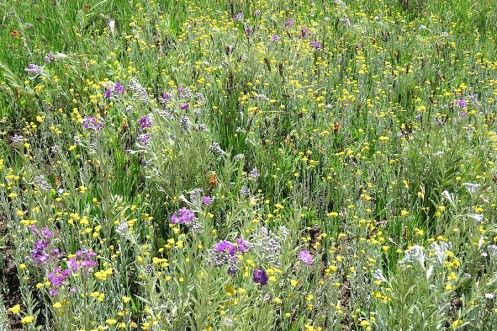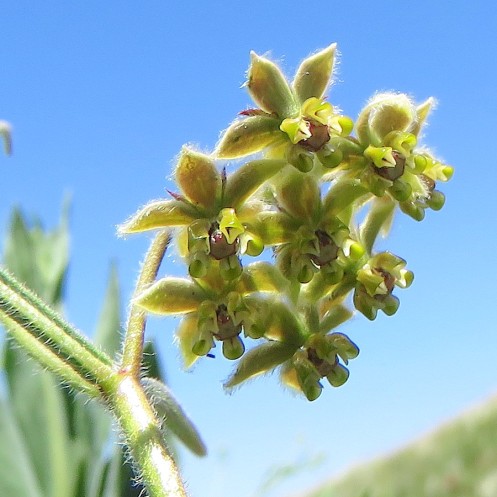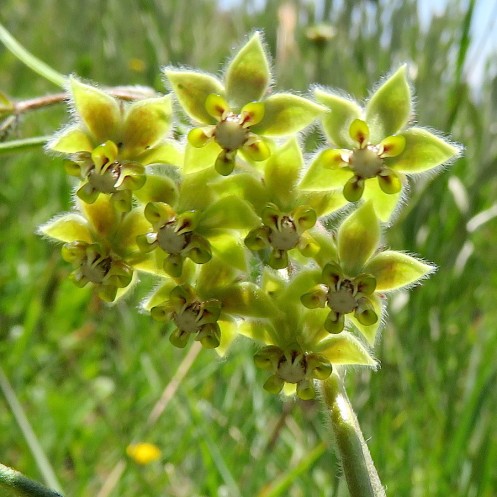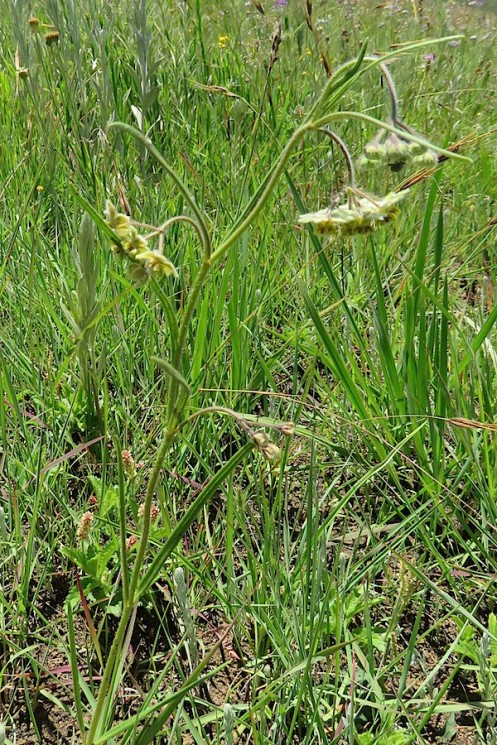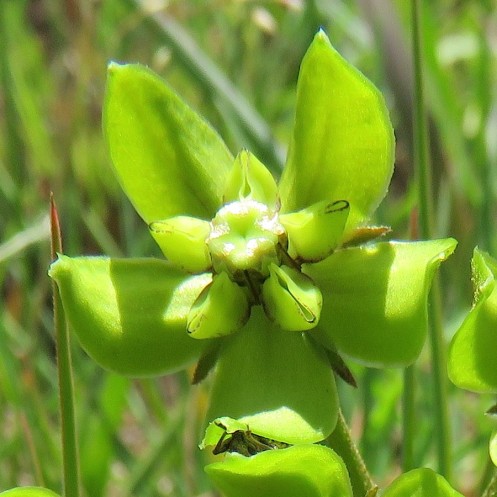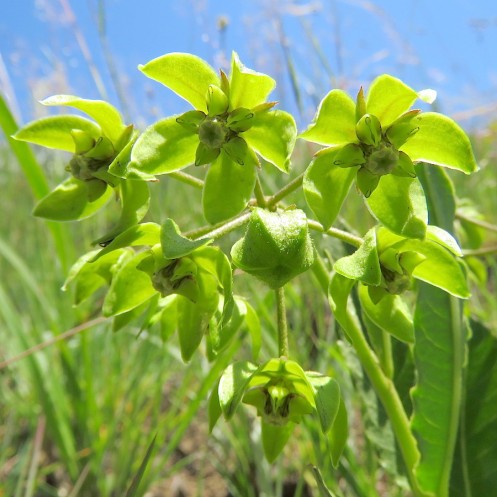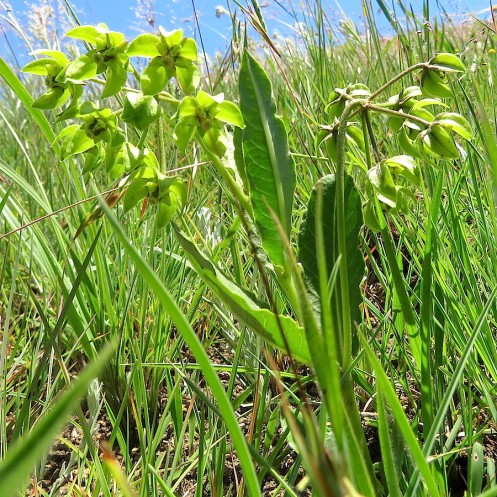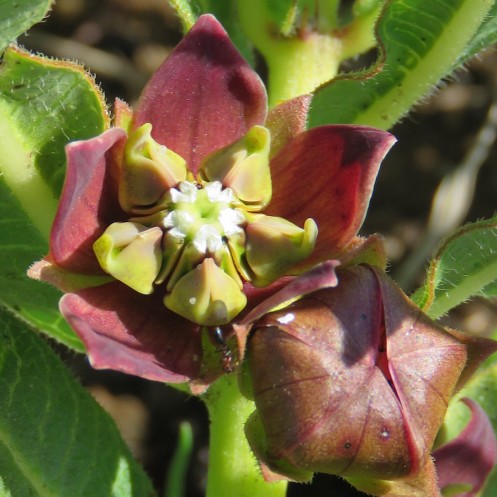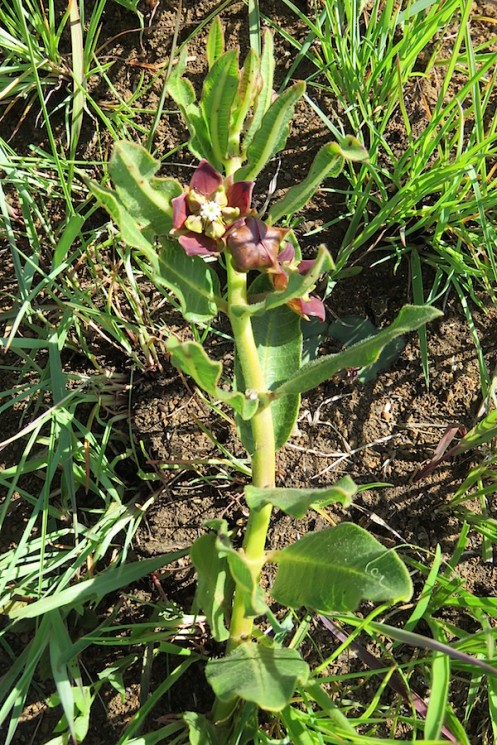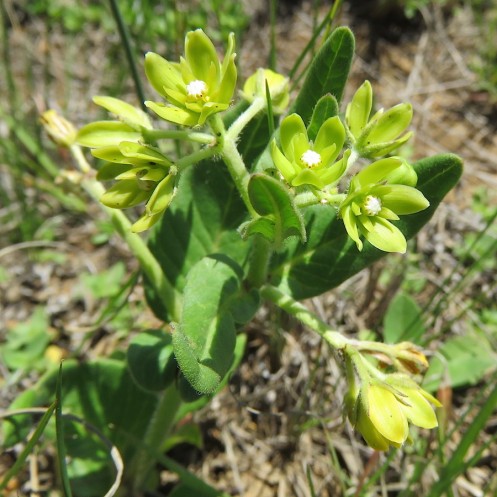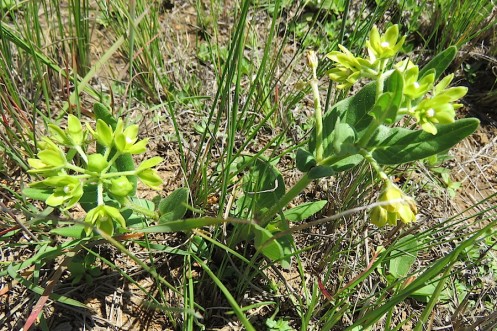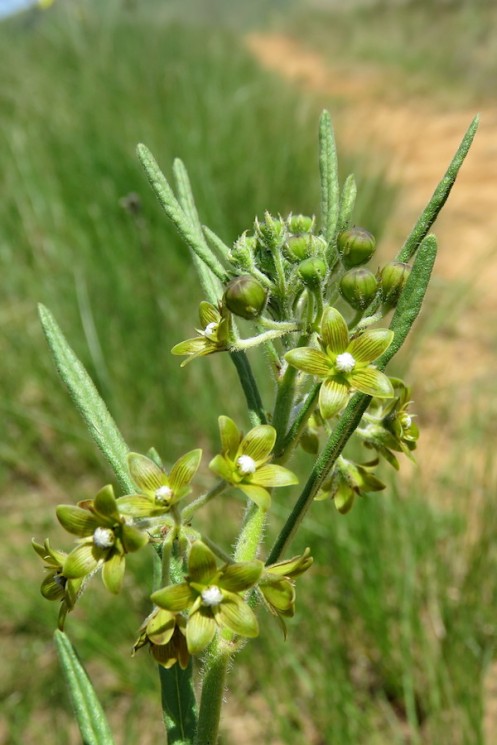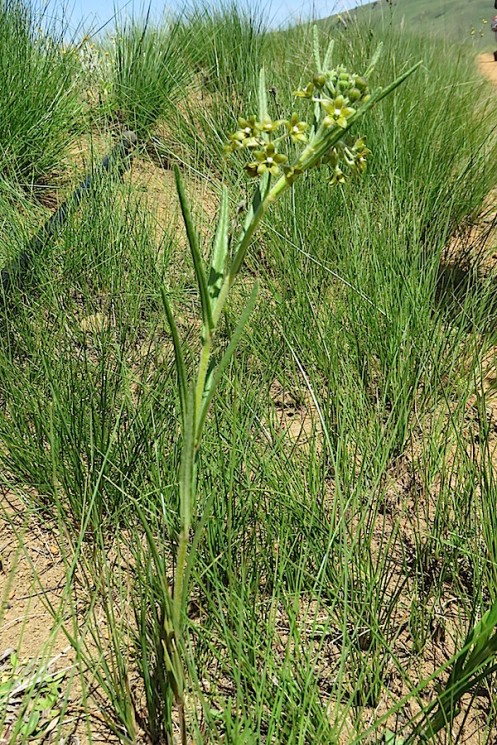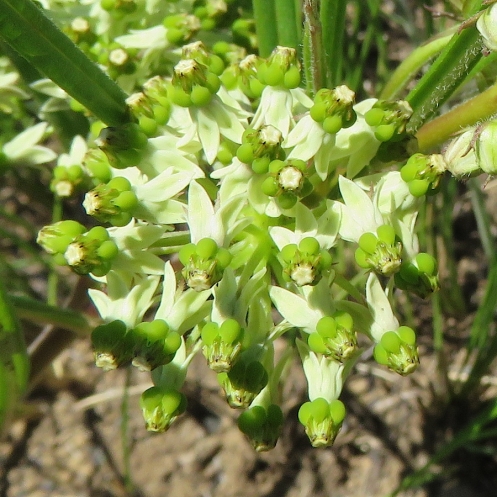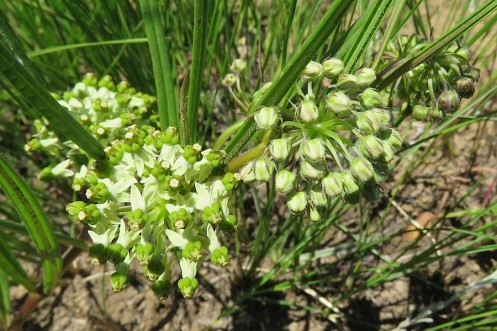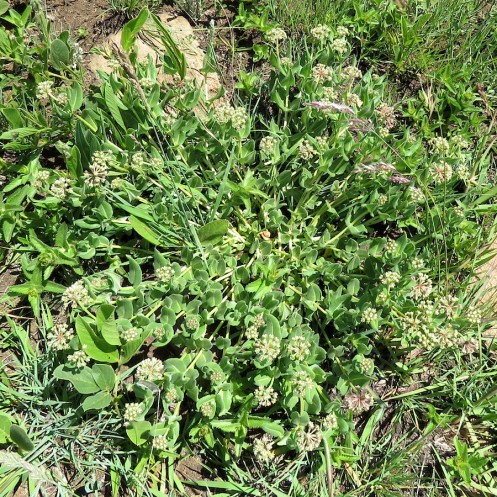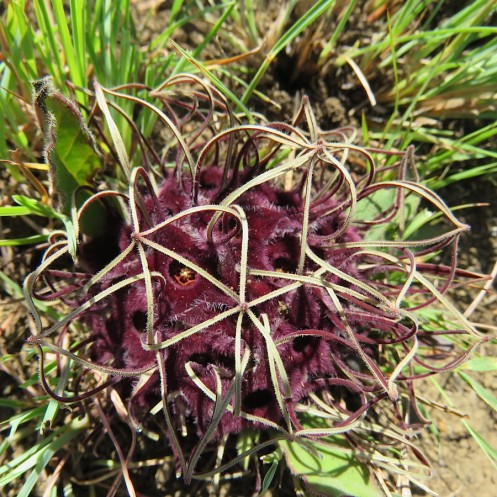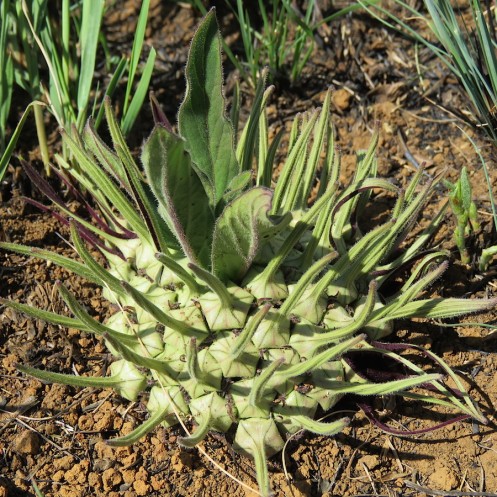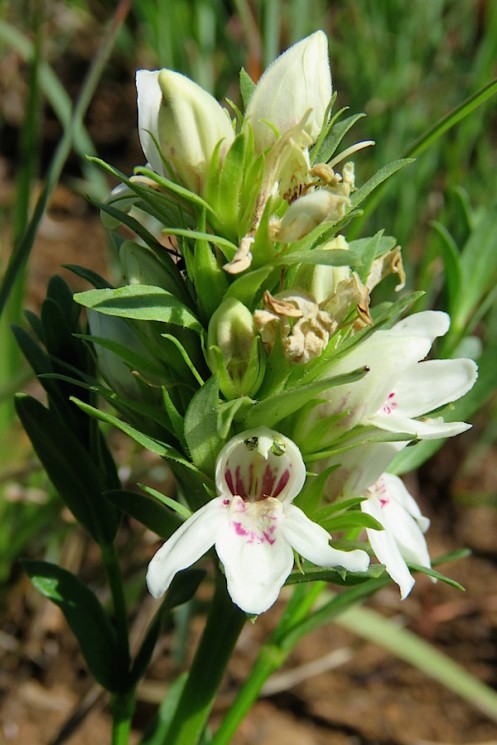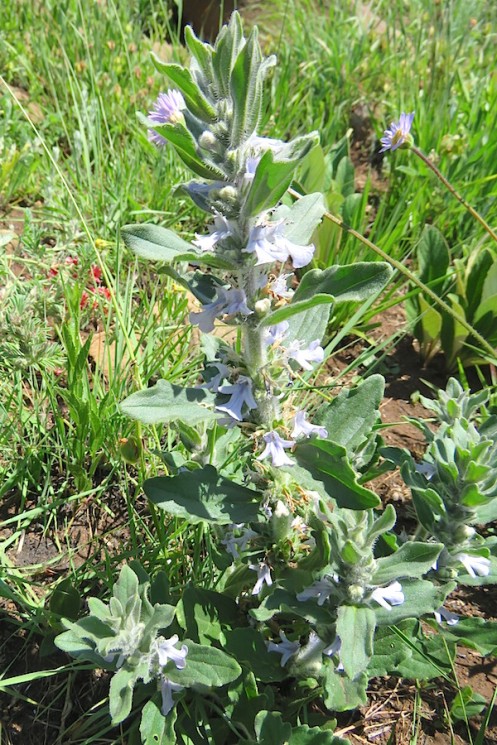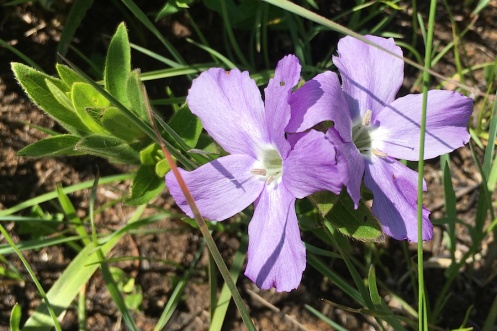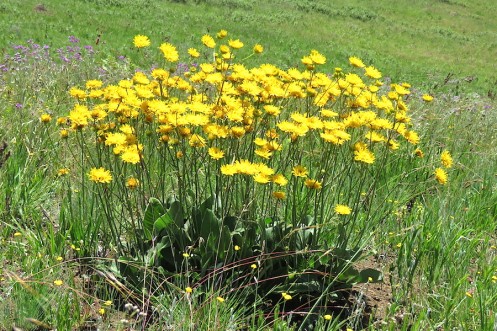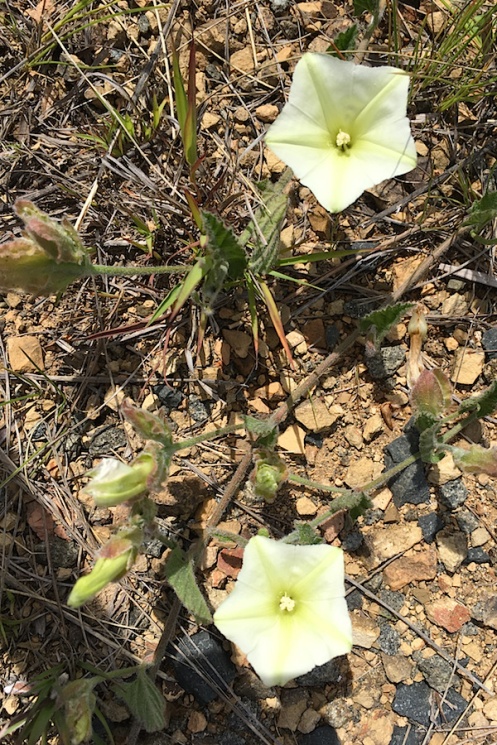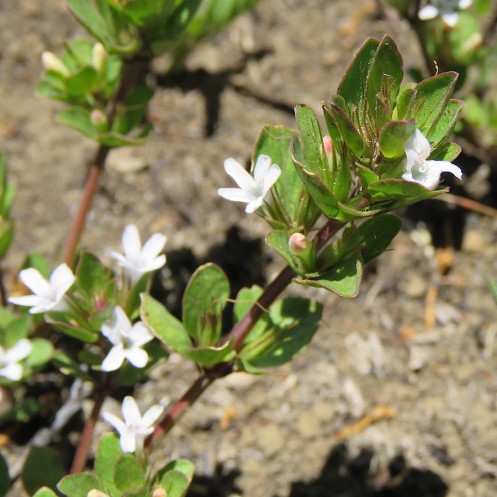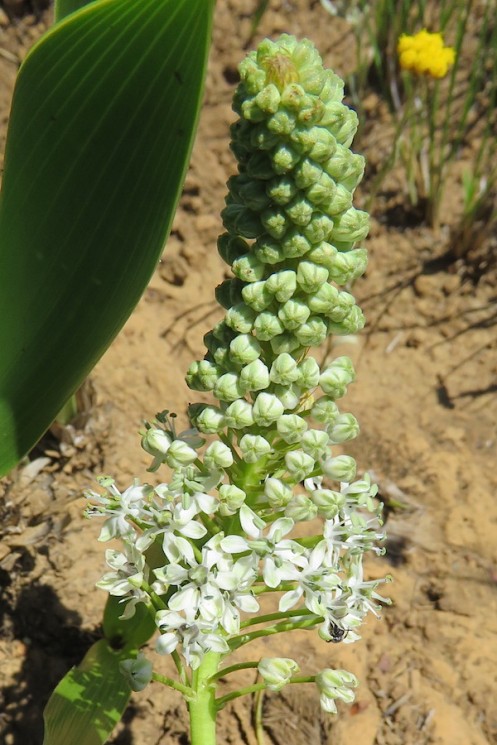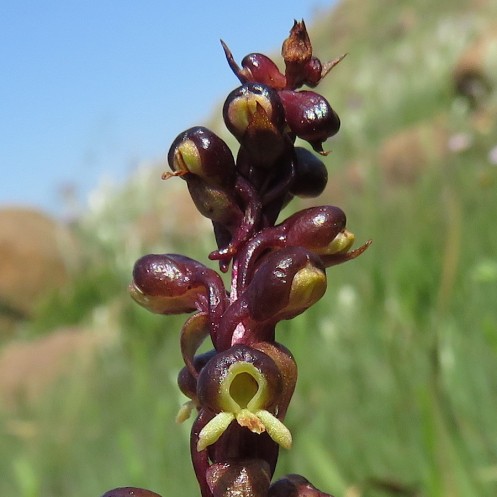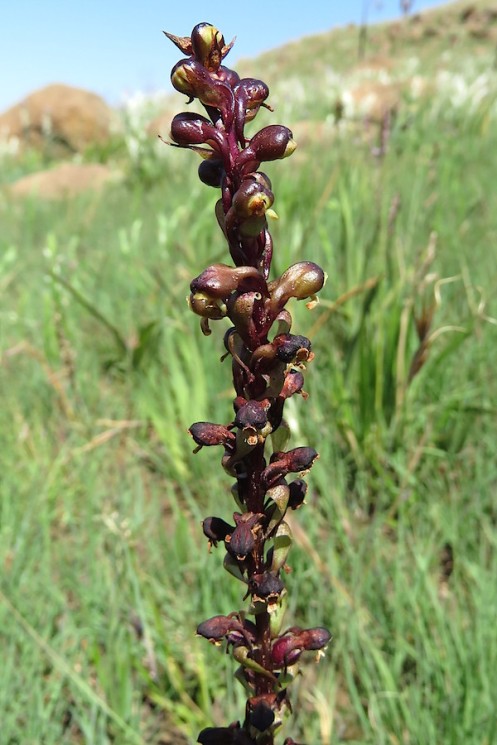
We experienced mainly hot dry spells with a few overcast days and some thunderstorms during November.

We measured only 53.5mm of rain, almost half of October’s rainfall. The Maximum temperature during the month was 30 C and the coldest a Minimum of 5 C during the early hours of 1 November. Our well water has dropped way down again!
Growth has slowed down, flowers are not as prolific as usual and there are still open patches of soil in between the grass.

The highlight was finding a
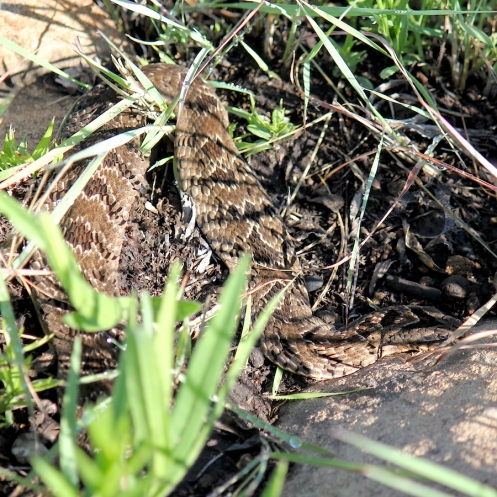

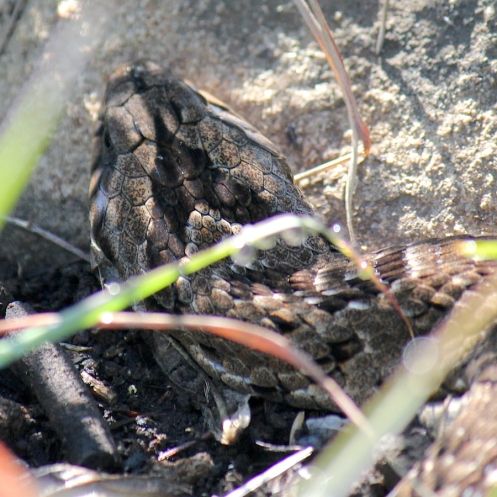

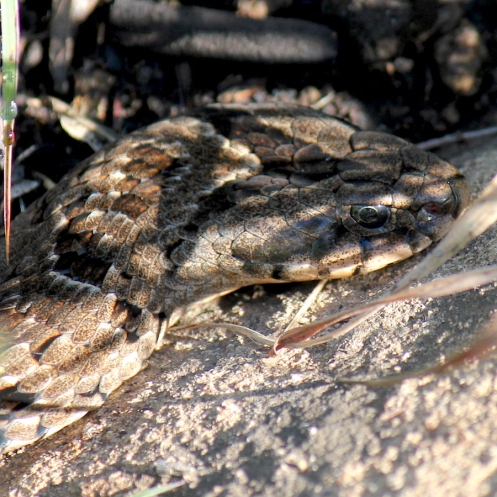
Common or Rhombic night adder
on a morning walk. It didn’t move off, merely flattened it’s body and allowed me to take a series of photos. It was very camouflaged amongst the grass.
Some insects caught my eye,

this metallic coloured Blow fly sp. Family Calliphoridae;
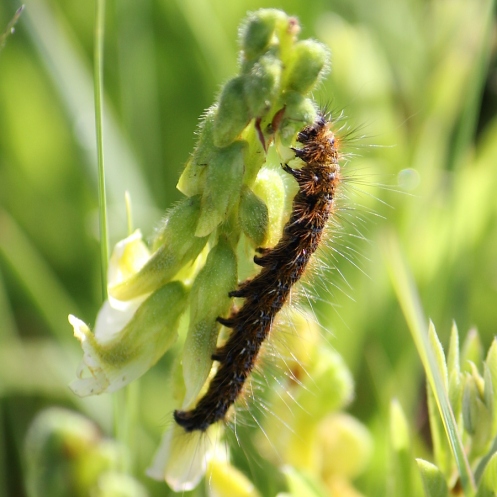

a delightful small Hairy caterpillar;

a vibrantly striped caterpillar
and a small butterfly,
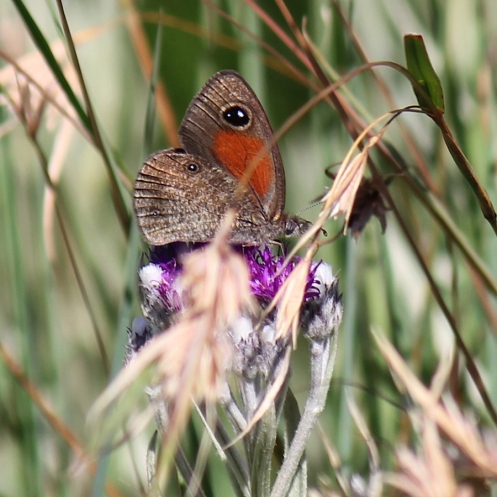
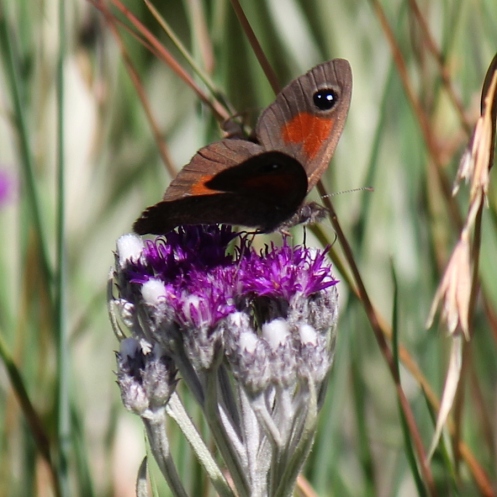
Wichgraf’s Brown, Stygionympha wichgrafi.
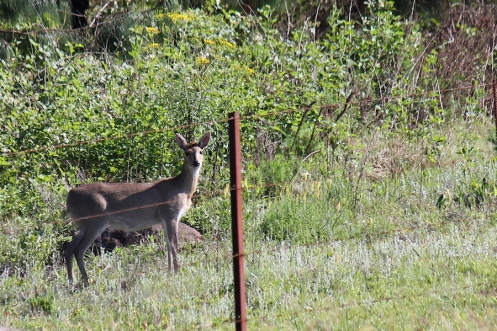
A female Common Duiker observed me from beyond the fence

and a most exciting find was fresh Eland droppings, probably the old, one horned male that is seen from time to time along the ridge.
Some of the flowers seen and photographed are:


Alepidea natalensis;

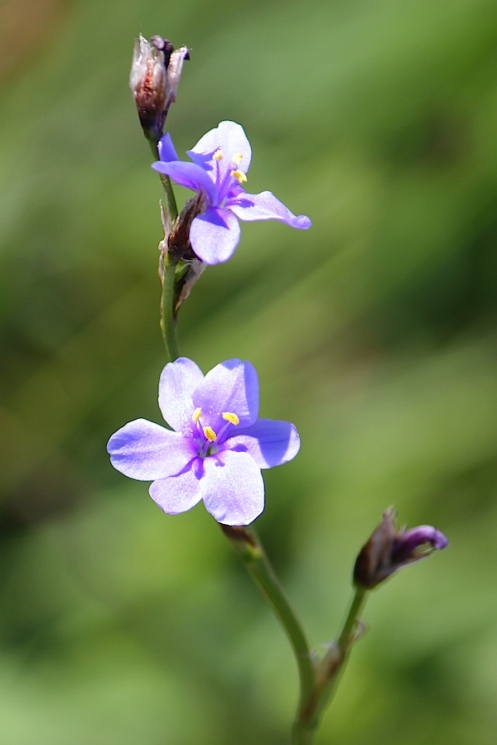
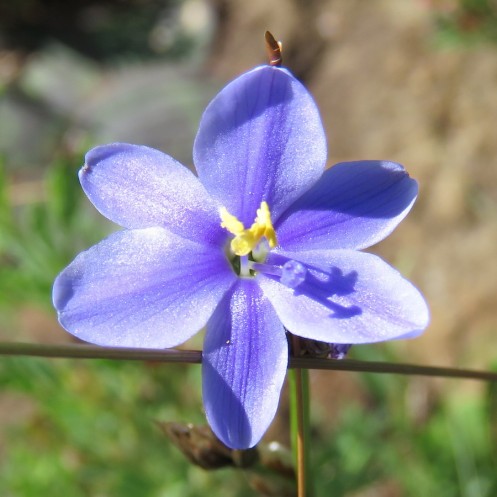
Aristea woodii;
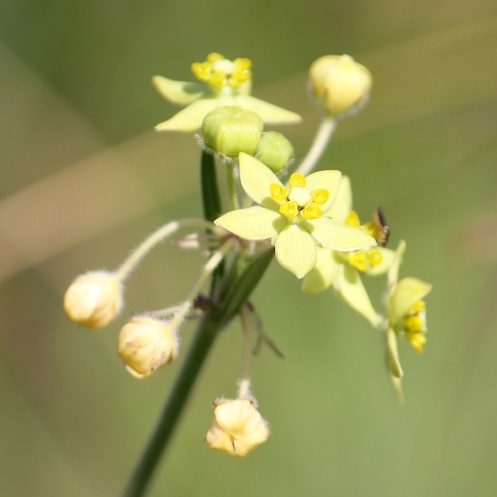
Aspidonepsis diploglossa;
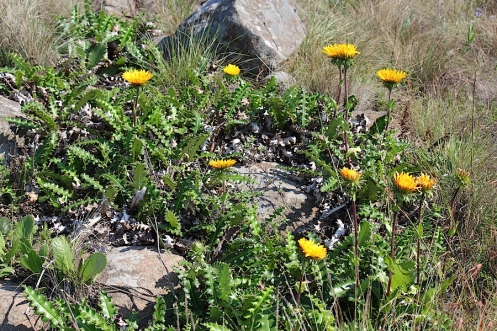


Berkheya macrocephala, such shining yellow, happy flowers;
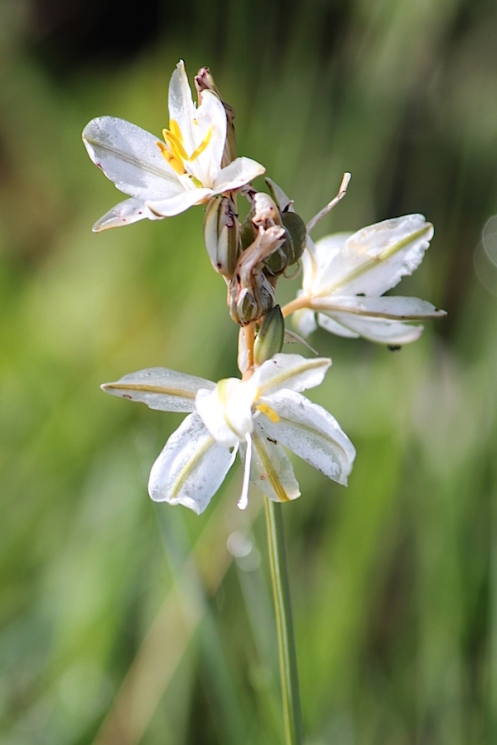
Chlorophytum cooperi;

Cyanotis speciosa;
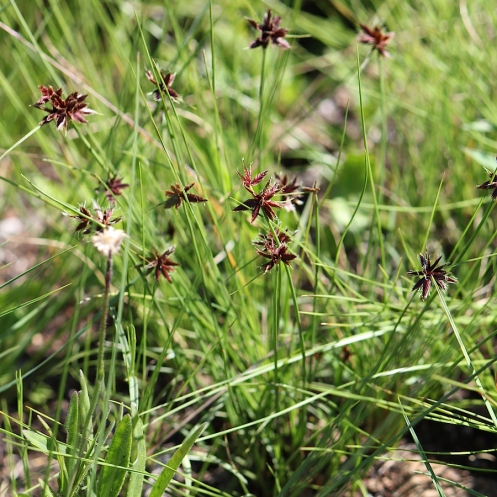
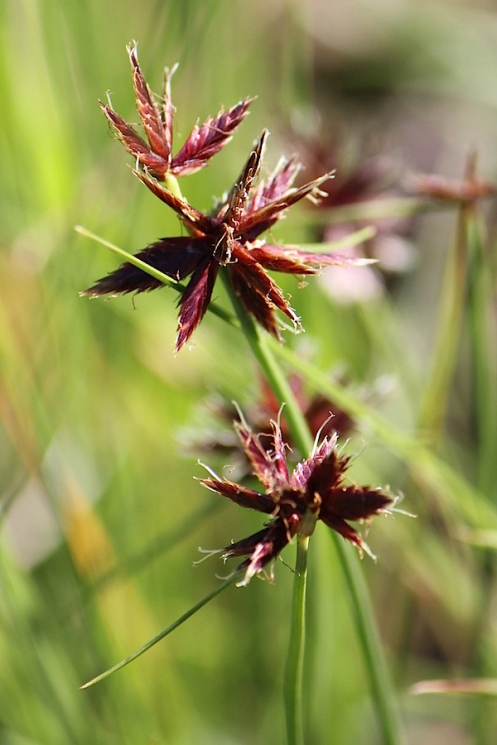
Cyperus rupestris;

Cyphia elata;

Delosperma hirtum;
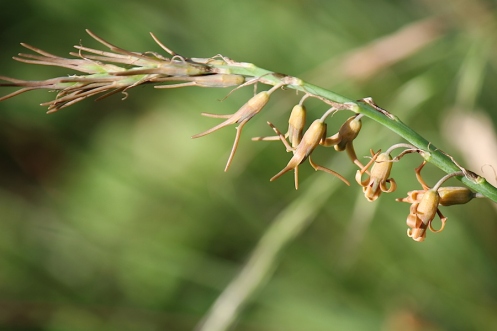

Dipcadi viride;

Eriosema kraussianum;
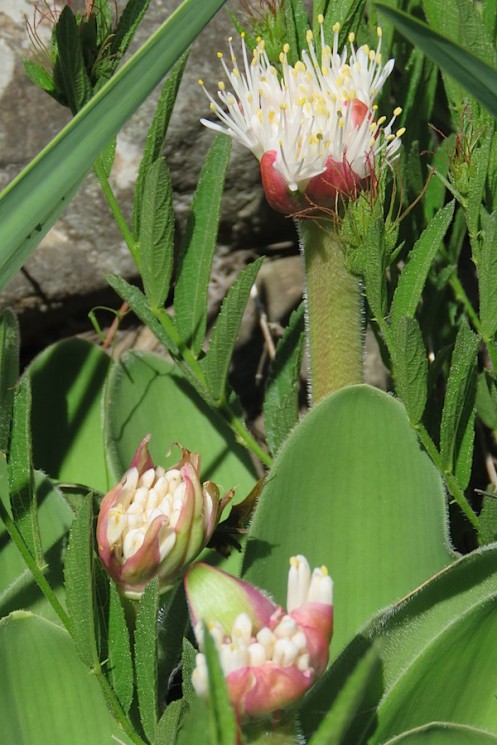
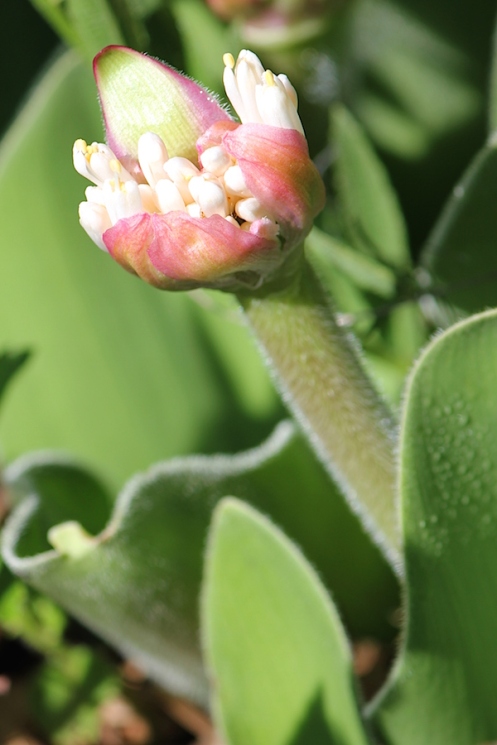
Haemanthus humilis;

Harpochloa falx, Caterpillar Grass;


Indigofera hilaris;
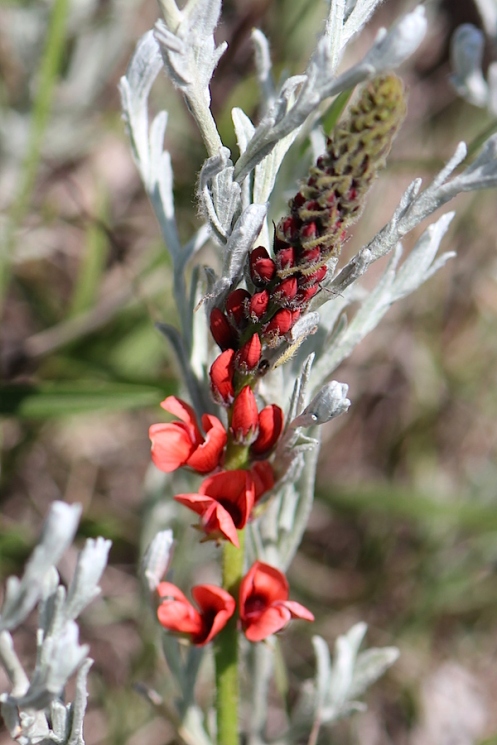
Indigofera veluntina;
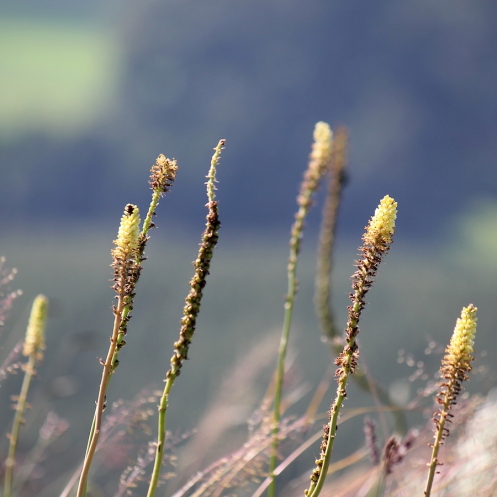

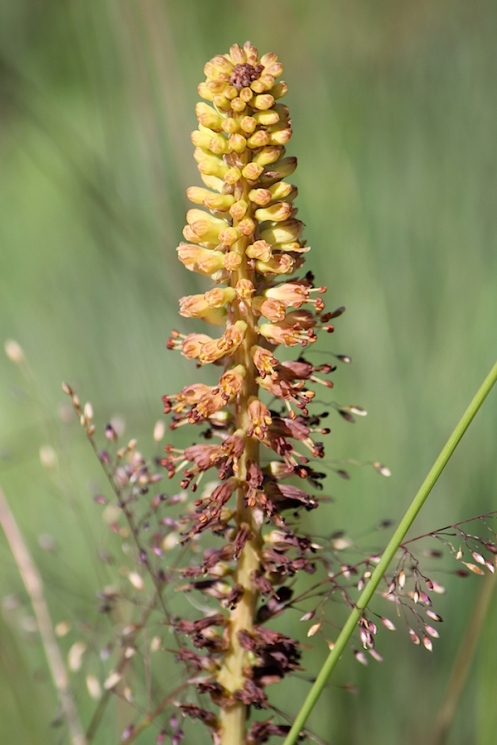
Kniphofia brachystachya flowers at the beginning of November
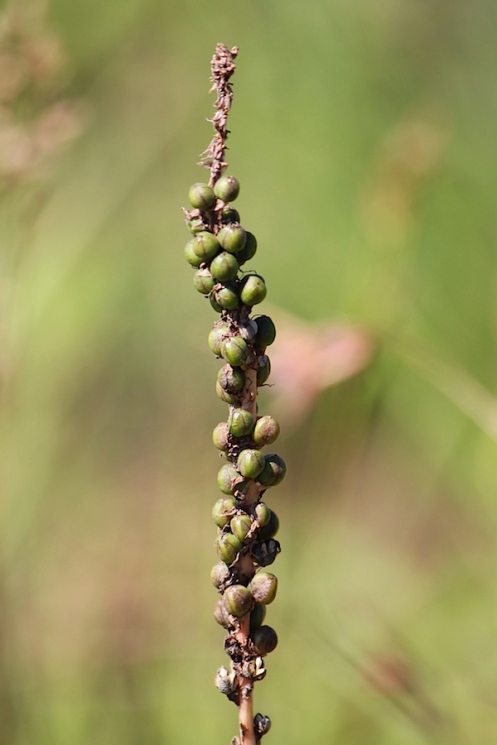
and fruits at the end of the month;

Kohautia amatymbica, Tremble Tops;

Leobordia (=Lotononis) corymbosa;
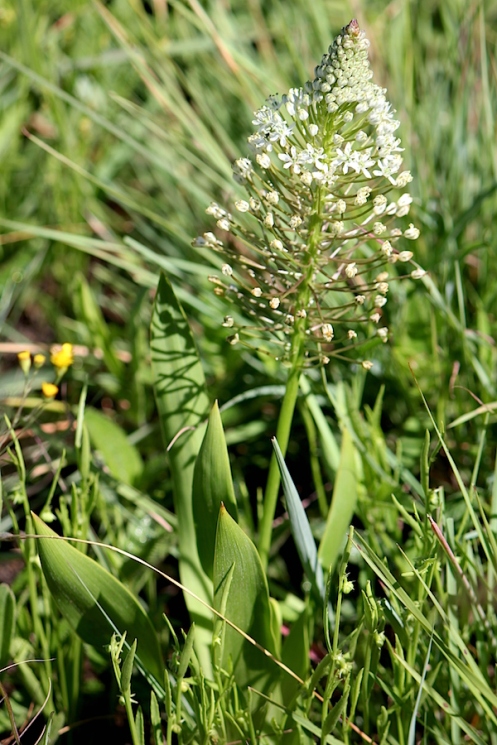
Schizocarphus (=Merwilla & =Scilla) nervosa;
only two Orchids,
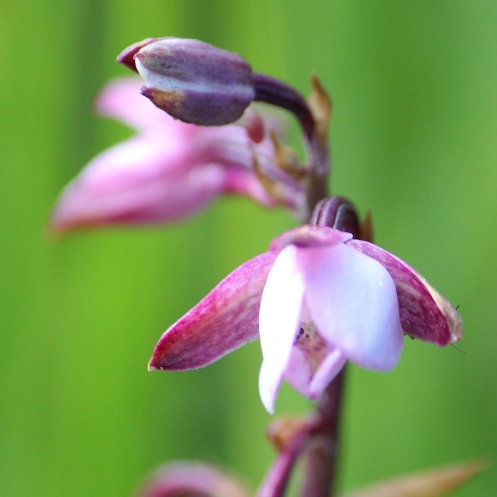
Eulophia hians var hians;
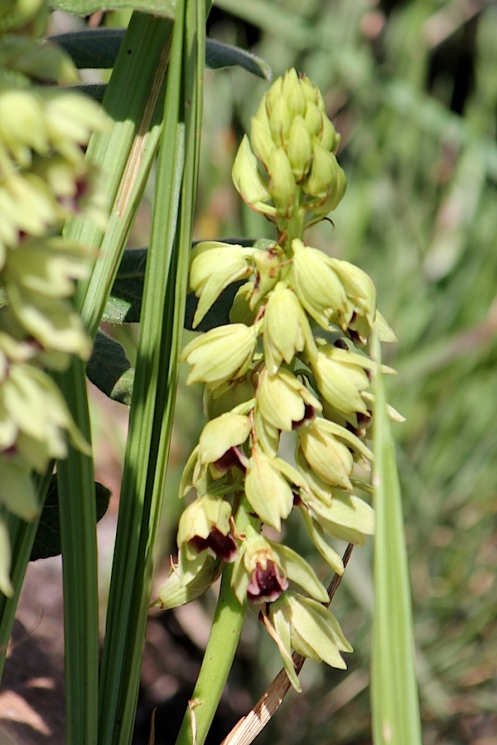
Orthochilus foliosus;
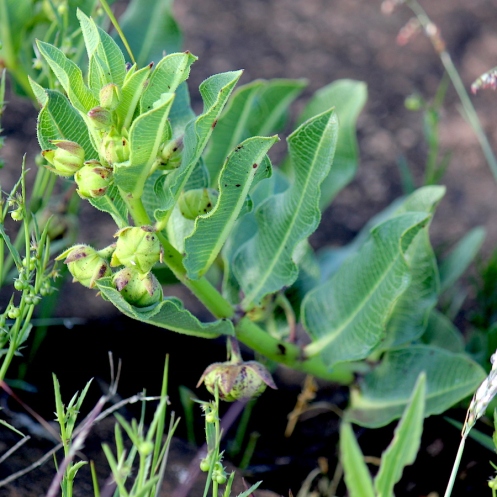
at the beginning of the month the Pachycarpus natalensis buds had formed
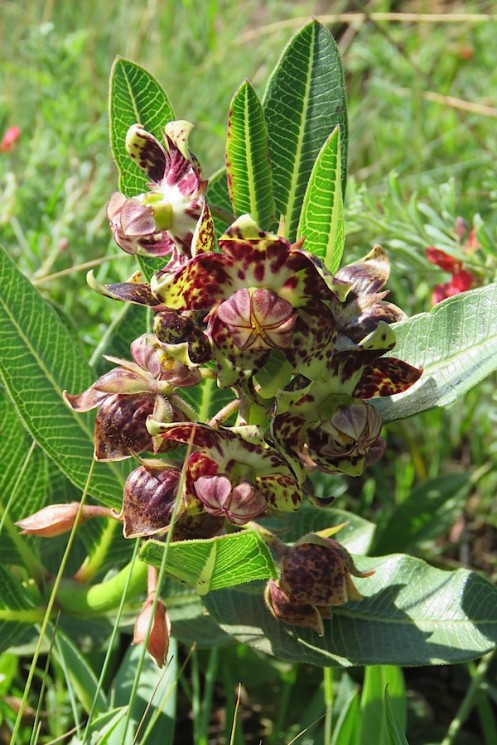

and by the end of November they were in full bloom;
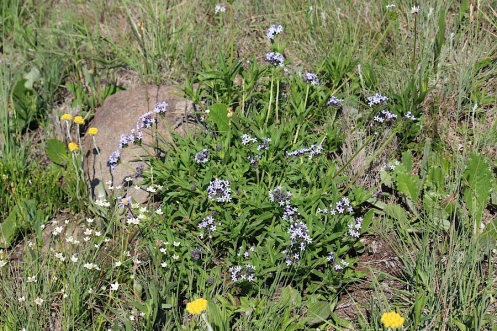

Pentanisia prunelloides;

Peucedanum caffrum, Wild Parsley fruits;

Raphionacme hirsuta;
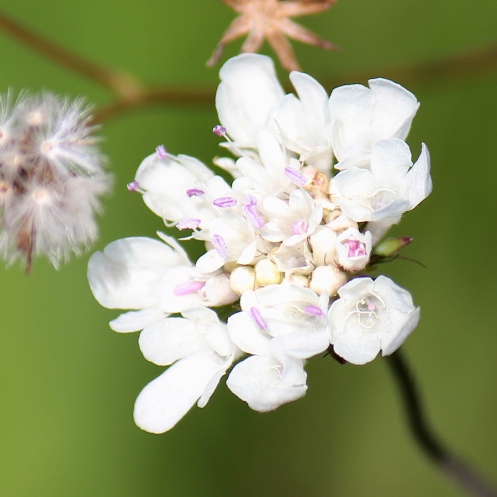
Scabiosa columbaria;
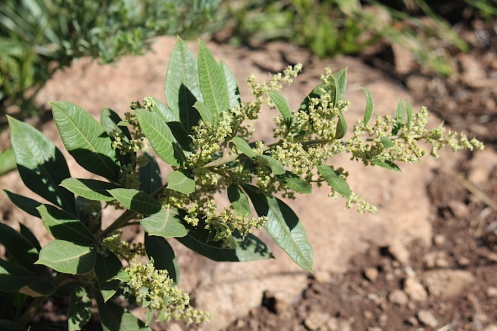
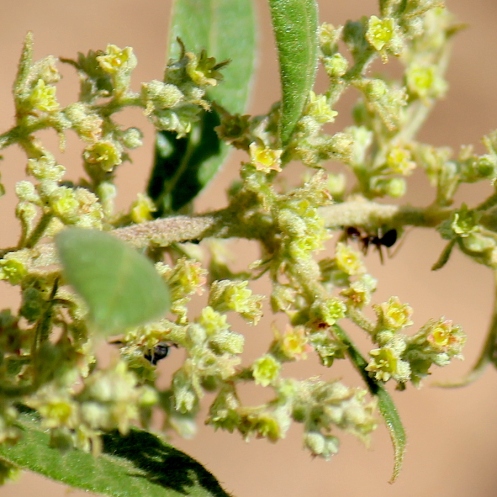
Searsia (=Rhus) discolor has minute little flowers;
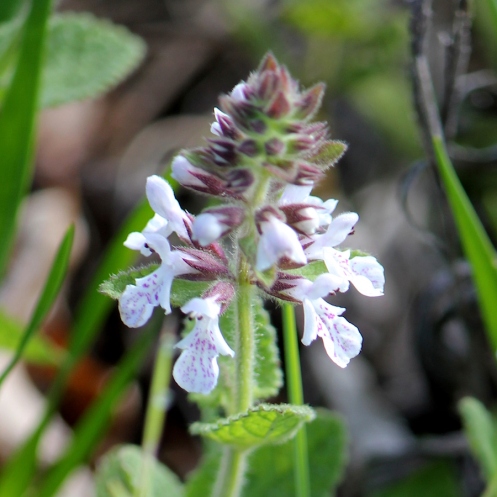
Stachys aethiopica;
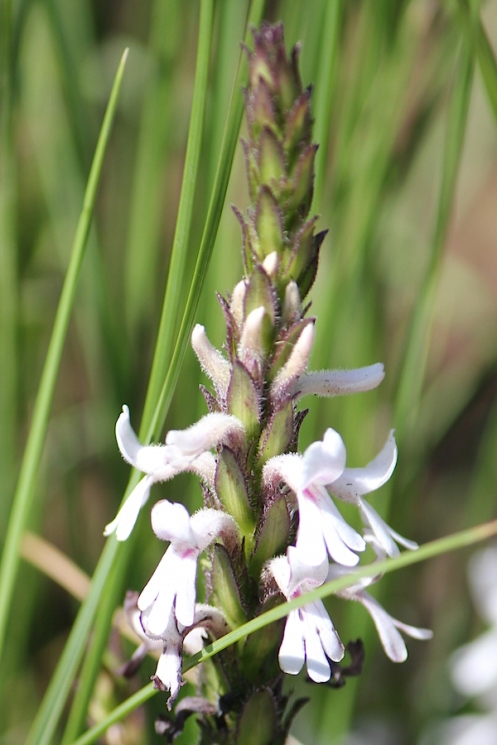
Striga bilabiata
looks very similar to Stachys aethiopica of the Lamiaceae – Sage/Mint Family, but is of the Scrophulariaceae – Snapdragon Family and is a parasitic herb on grasses;
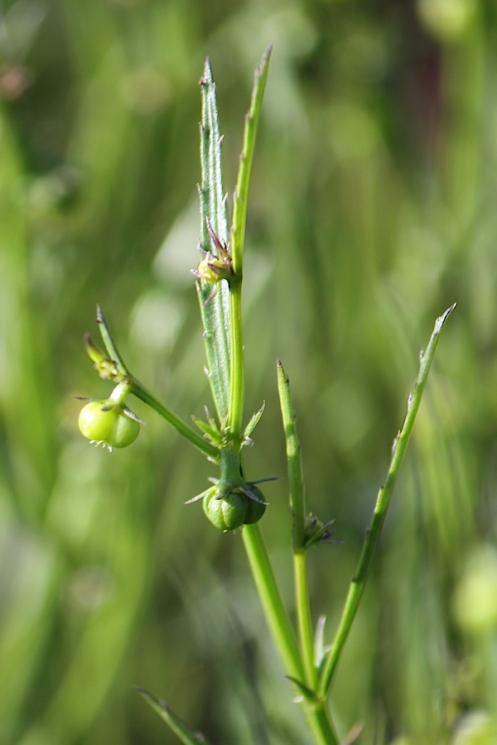
Thesium pallidum fruit, flowered in October;
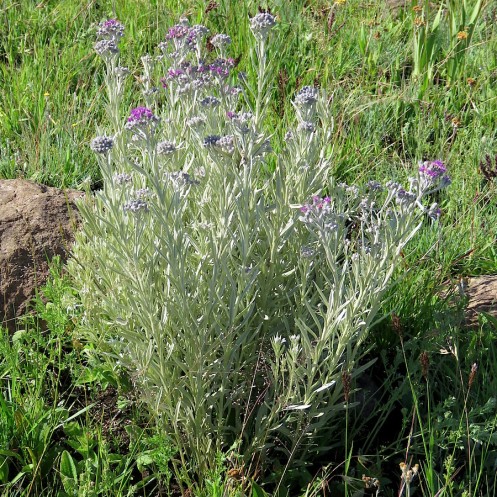
Vernonia natalensis;
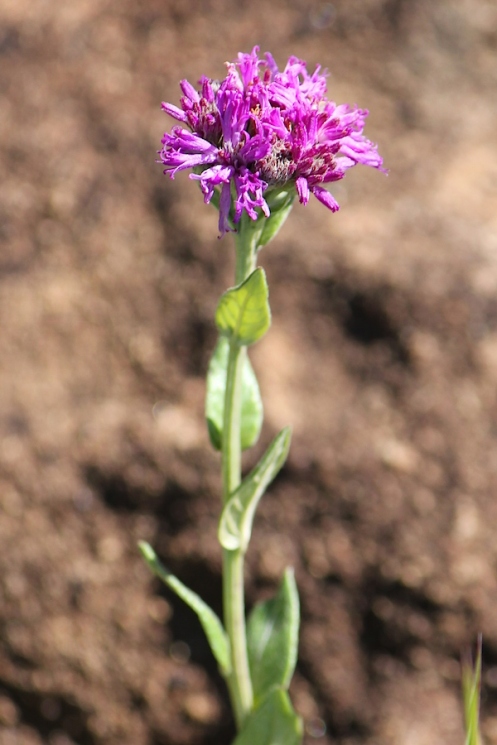
Vernonia sp.;


Wahlenbergia cuspidata;
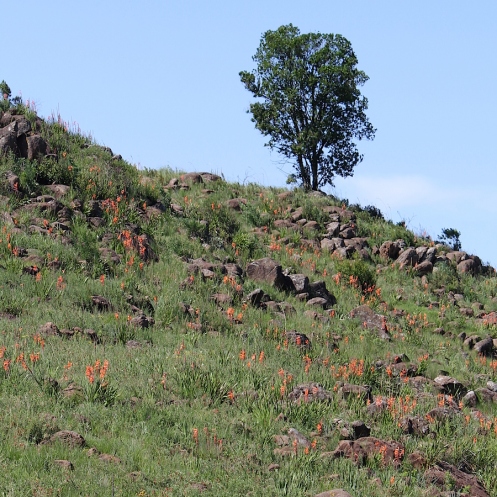

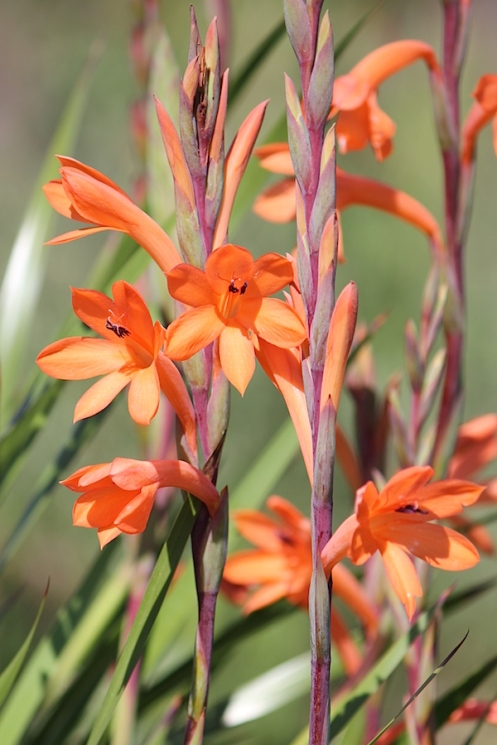

Watsonia socium carpeted the hillside and
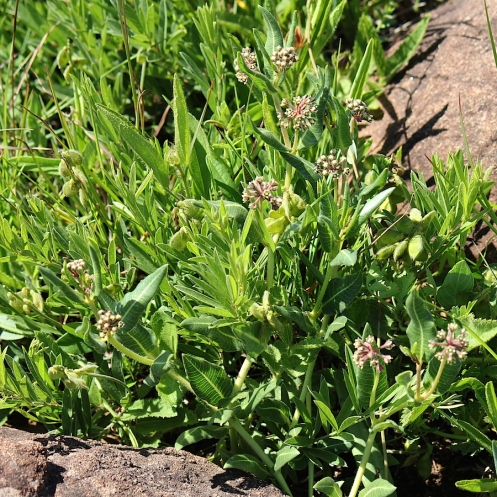
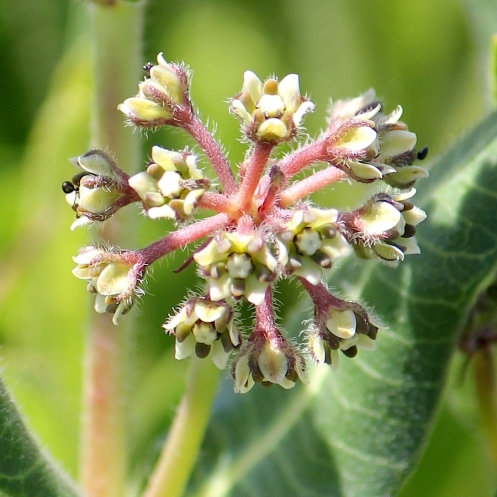
Xysmalobium parviflorum.
The Red-winged Starlings try to come into the kitchen to roost on top of the pantry cupboard on misty days, and are very indignant when chased out!
Beautiful rain with hot dry spells in between, during October. We measured 102.5mm of rain, the Maximum temperature during the month was 30 C and the coldest a Minimum of 3.5 C during the early hours of 4 October when

snow fell on the Southern Drakensberg. Our well water is starting to rise slowly again!
Due to the moisture and warmer temperatures grass is growing and flowering, wildflowers appearing and a feeling that Summer is on its way.
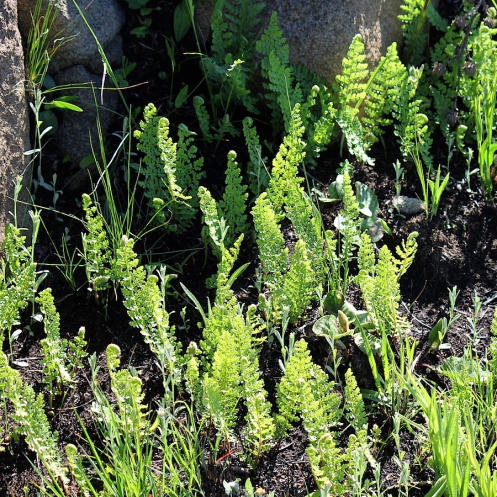
The delicate fern Mohria vestita has popped up in shady places near rocks.
I felt uneasy about identifying Anemone fanninii for the August 2018 Diary, it didn’t feel correct, and when I spotted
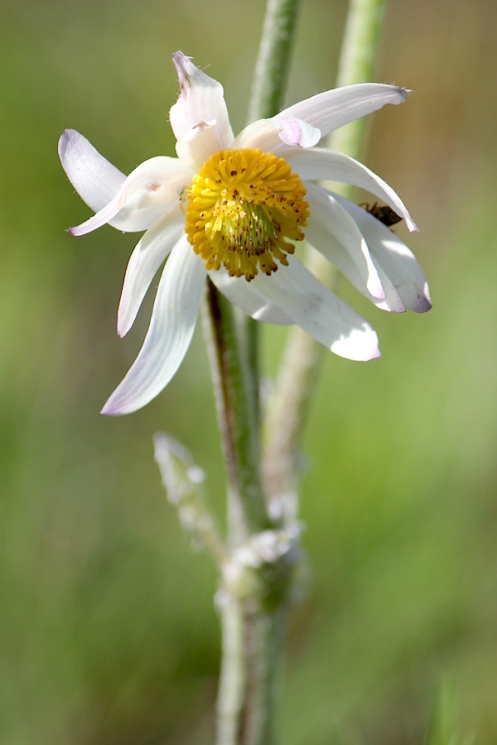
Anemone fanninii flowering this month
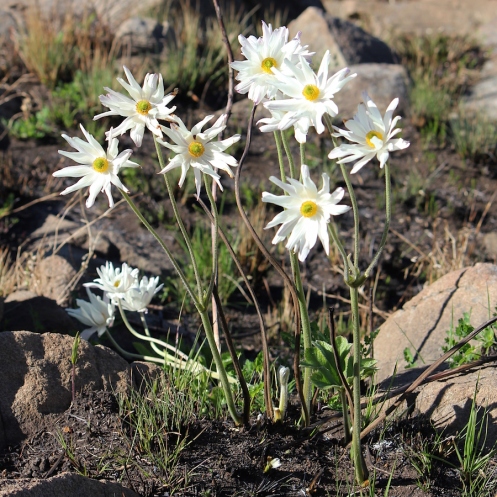
Anemone fanninii (2017/08/24)
I was certain that in August it was actually
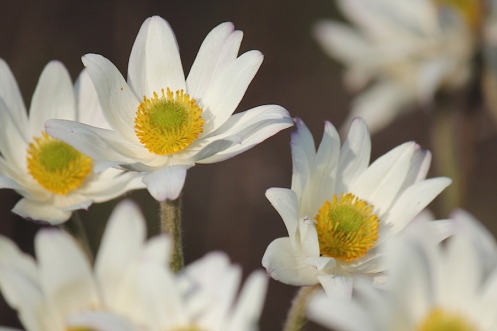
Anemone caffra
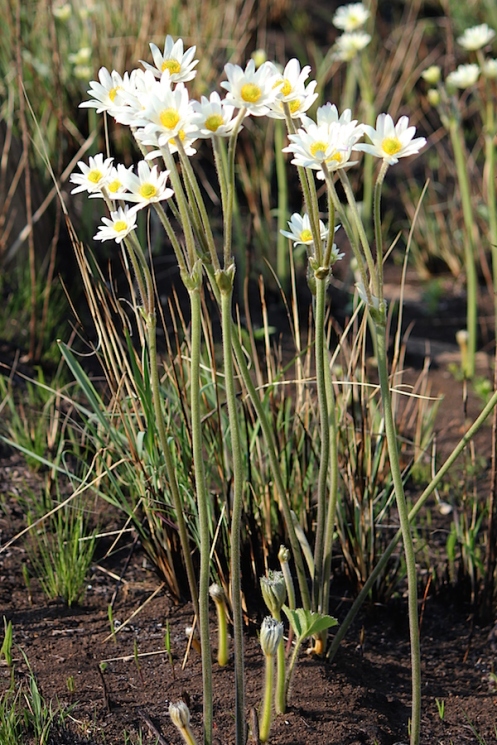
Anemone caffra flowering,
which means a new ID for Sitamani, and that both species are found here on the same hillside. The flower forms are definitely different, the A caffra have shorter rounded sepals and A fanninii longer, more ragged sepals. In both cases the leaves are not present or only starting to appear when they flower. (I have corrected the August 2018 Diary).
Other flowers seen and photographed are:
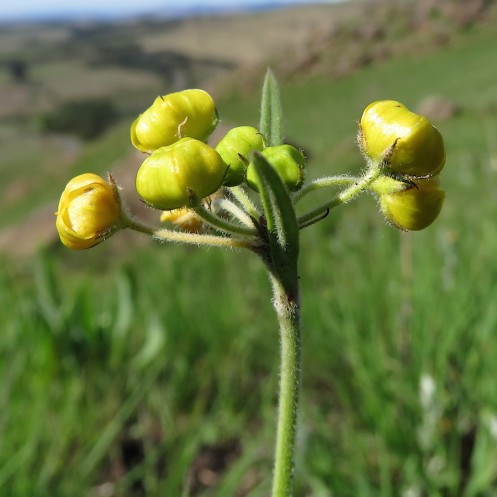
Aspidonepsis diplogossa;
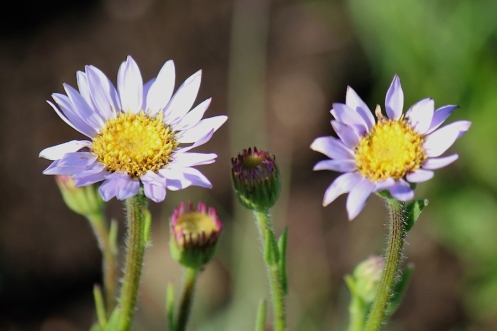
Aster bakerianus;

Clutia cordata;
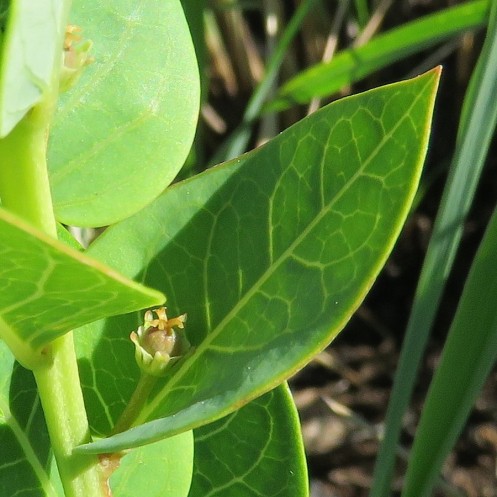
Clutia cordata;
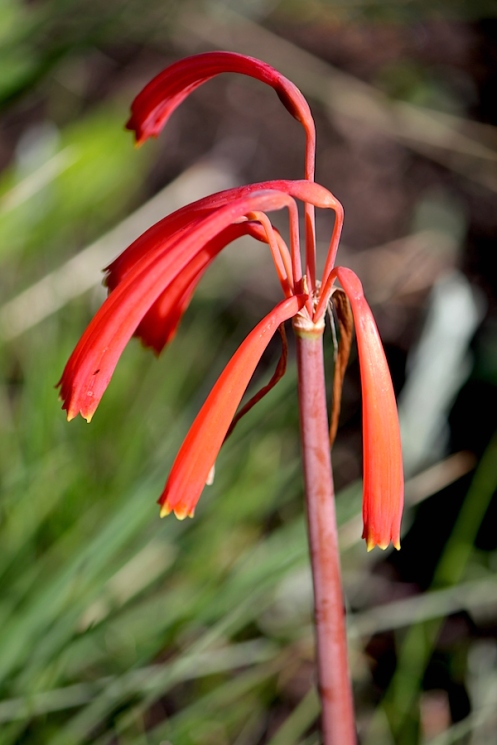
Cyrtanthus tuckii;
two Dieramas,

Dierama cooperi
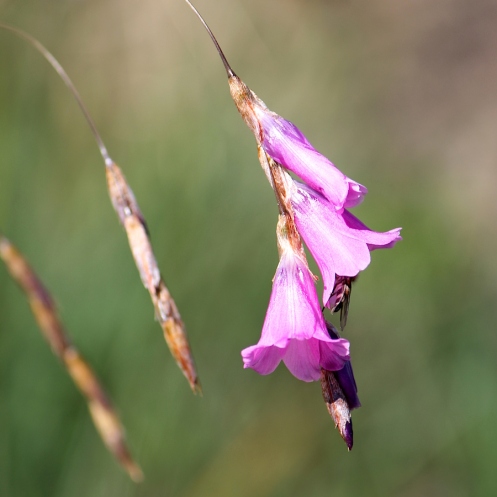
Dierama cooperi

Dierama latifolium;

Eriosema salignum;
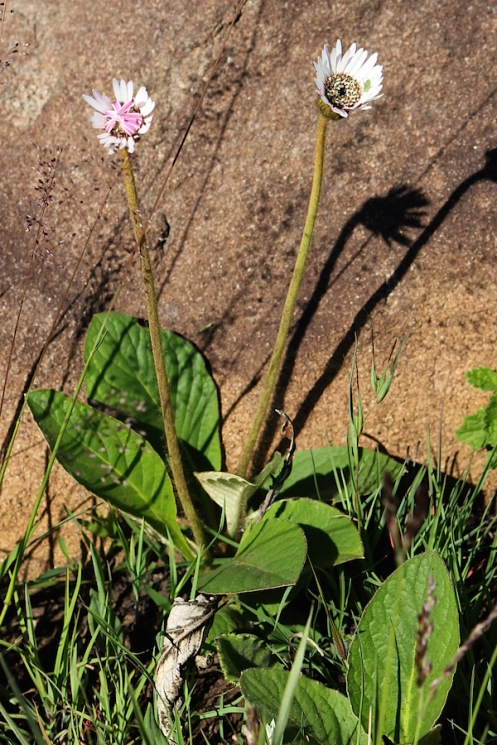
Gebera ambigua;

Gebera ambigua;
on a cooler morning as the mist rose

Gladiolus longicollis;
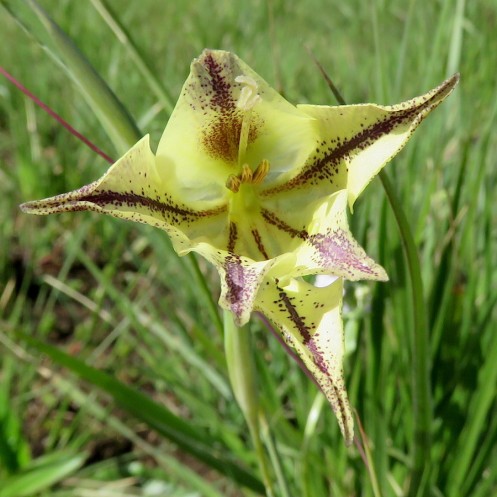
Gladiolus longicollis;

Graderia scabra;
masses of
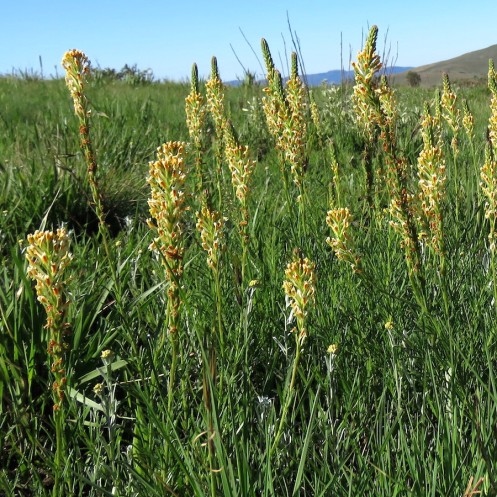
Hebenstretia dura

Hebenstretia dura on the top of the hill;

Hypoxis argentea;
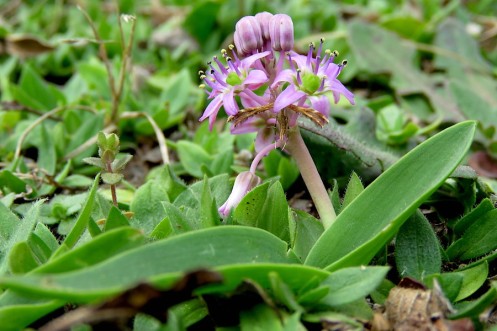
the delightful Ledebouria cooperi;
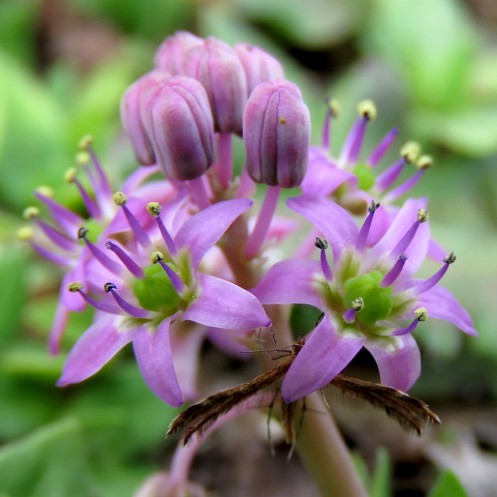
Ledebouria cooperi;
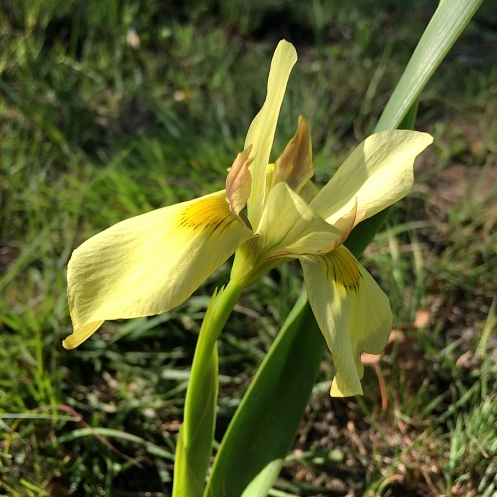
Moraea graminicola;
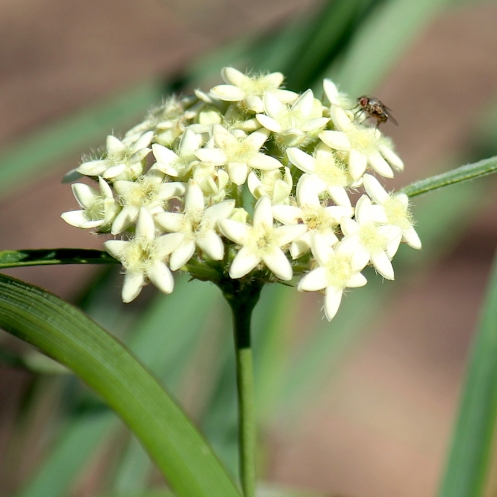
Sisyranthus trichostomus, Hairy Grass Flower, as the tube entry on each floret is thickly hairy;
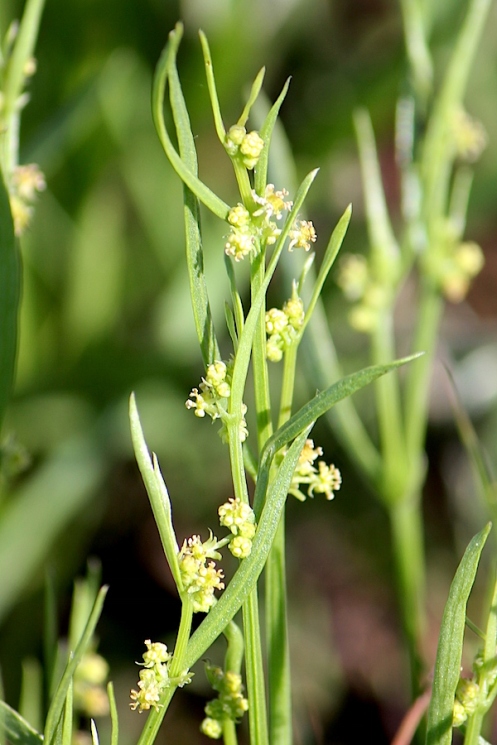
minute flowers only ±2mm each on Thesium pallidum;

Tulbaghia leucantha
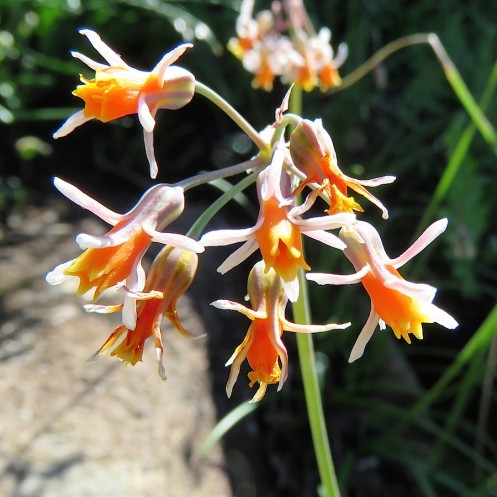
Tulbaghia leucantha, Wild Garlic, the leaves are very tasty in salad;
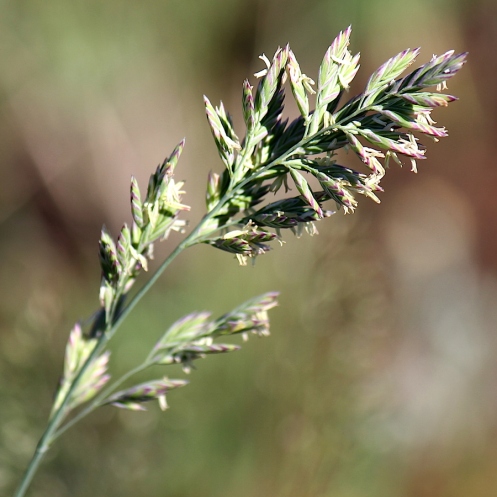
and a flowering grass caught my eye, possibly an Eragrostis species, if anyone knows the ID please let me know!
Sadly the weather this spring season has not been good for Orchids, and I haven’t seen any flowering yet.
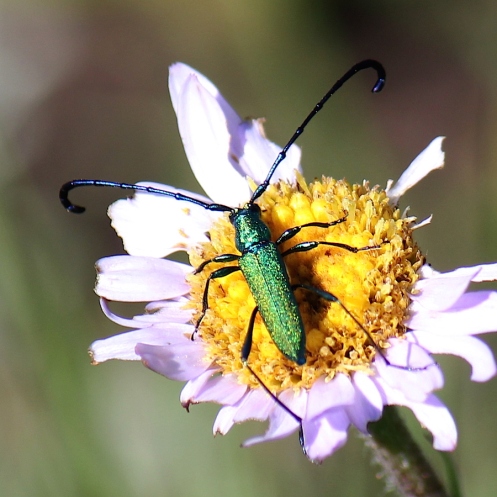
A shiny Common Metallic Longhorn beetle, Promeces longipes, glistened on an Aster bakerianus flower.
Some interesting moths have appeared,
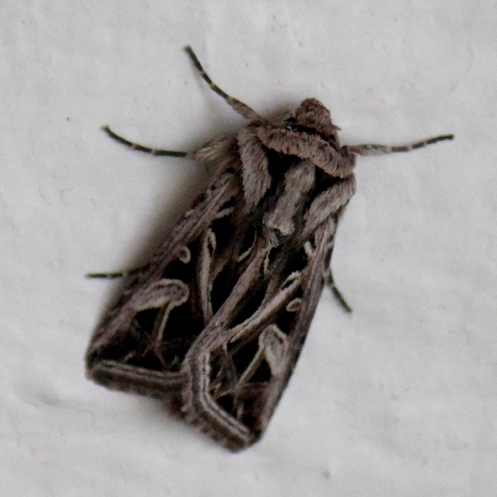
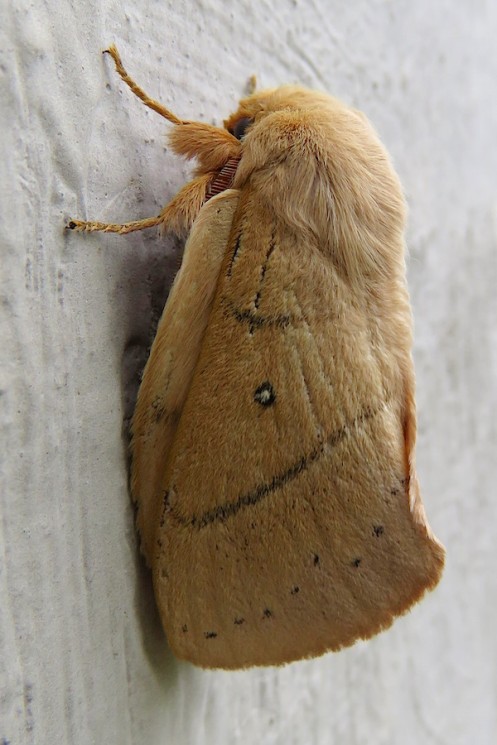
and it took lying down on my stomach to photograph the tiny
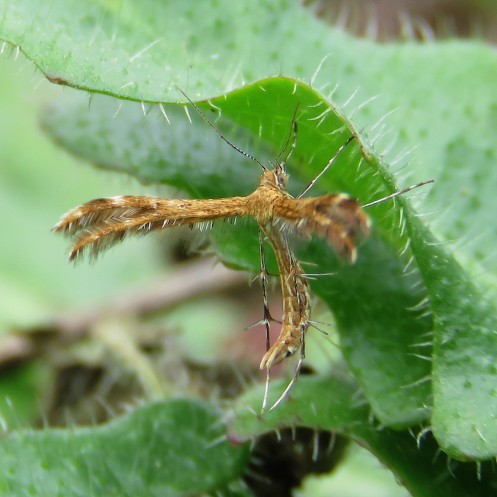
Orange Plume Moth, Crombrugghia wahlbergi.
Fossicking on the hilltop early one morning I spotted a

Cape Longclaw, Macronyx capensis.
It was about 17 years ago that I last saw one here. Once the pine trees had grown up on the neighbouring Mondi plantation, they seemed to have disappeared, so it was an absolute delight to discover there is at least a pair on our grassy hill!
The Common Grey Duiker are regular visitors to the garden, and the Common Reedbuck are loving the new grass near the well, we often see them when driving home at dusk. The Black-backed Jackals call frequently in early evenings and mornings.
September has seen temperatures of over 30 C with hot dry berg winds and
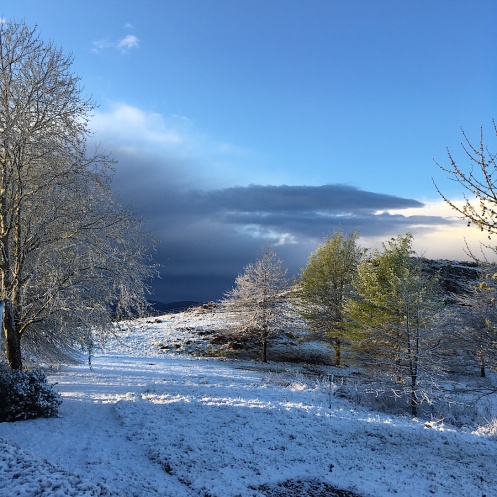
dipping to -2 C when we had a snowfall on the 9 September. Although the grass has responded to the moisture and the hillsides have greened up, not many wildflowers have bloomed yet. Our well, our water supply, has virtually dried up, so hoping rains will come soon.
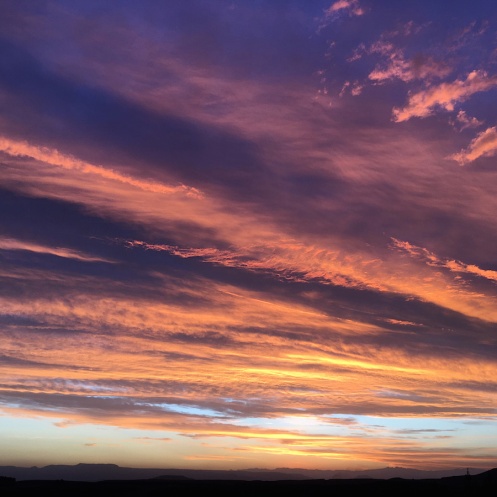
On the 28 September there was a particularly beautiful sunset.
I haven’t had much time to roam around our hillsides but have noticed that the orchid that showed signs of flowering,

Eulophia parviflora (short-spurred form) last month has had all the flowering stalks neatly nipped off, so we won’t see them this year;

after the snowfall the grasses were blanketed in a light cover of snow;
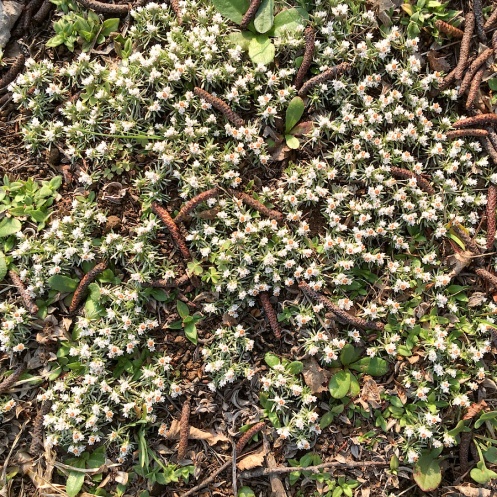

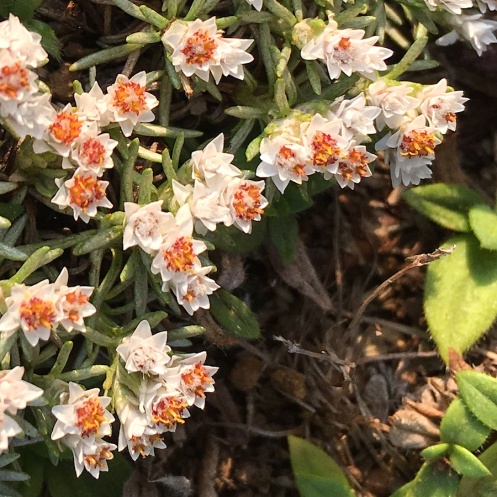
the minute, dainty Helichrysum caespititium was covered in blossom;
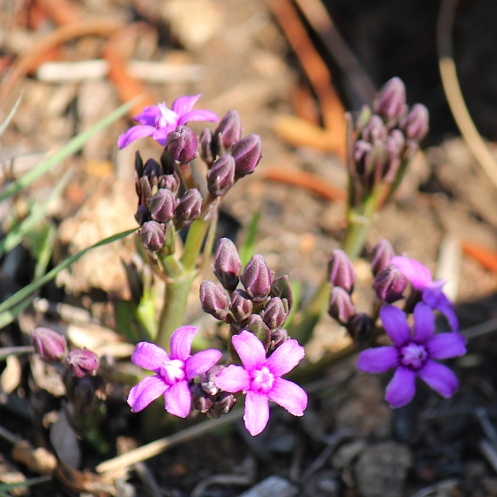
bright purple Raphionacme hirsuta glowed against the reddish soil and


delicately elegant Tritonia lineata fluttered in the breeze.
One morning I discovered a miniscule

Soft-winged flower beetle of the Family Melyridae on the edge of a cup.
A large moth,
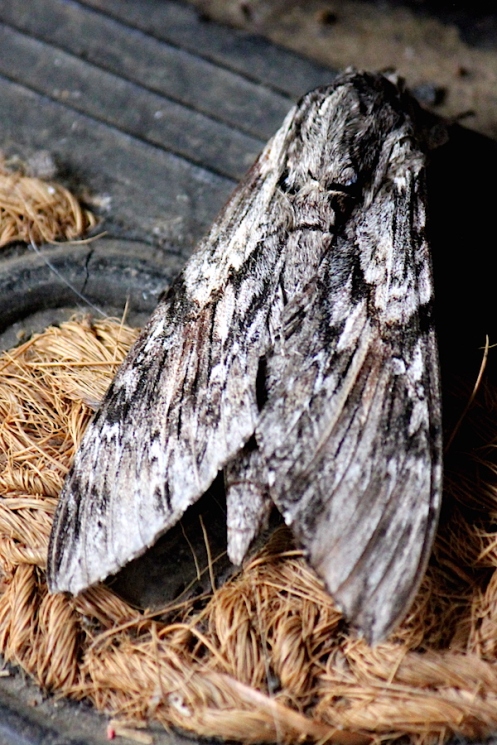
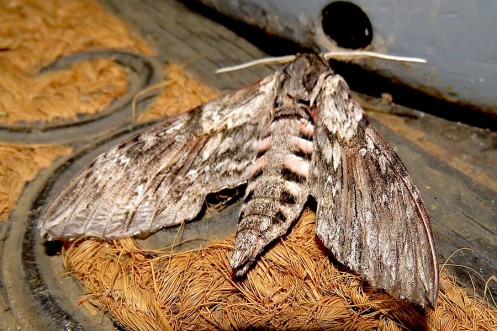
a Fulvous Hawk Moth, Coelonia fulvinotata, rested on the backdoor mat.
While walking on the hillside I found a weathered snail shell, which I think is a

Many-ridged shuffler Tropidophora plurilirata.
The Common Grey Duiker are regular visitors to the garden, and the Common Reedbuck are loving the new grass on the hillsides.
On the 25 September I heard the Piet-my-vrou, Red-chested Cuckoo, calling for the first time this spring. The Spotted Eagle-Owls have been calling at dawn and dusk, I hadn’t heard them for some time.
This August we have experienced contrasting weather, hot dry berg winds and very cold, misty and wet cold fronts passing through.
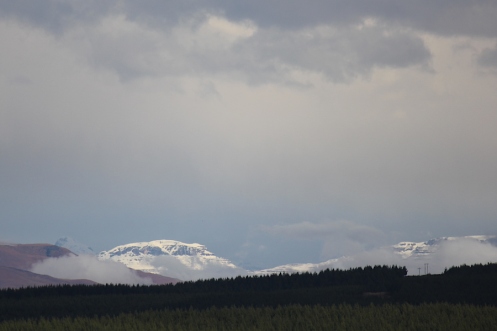

Snow fell on the berg and foothills on the night of 9th and morning of the 10th, then again on the 17th / 18th August. Although very cold, and a few fat, wet flakes fell on the morning of the 18th snow didn’t settle here, instead much needed light rain. We had the first proper frost of winter on the 4th of August and again on the 16th and 27th , these conditions have delayed the Spring flowers here compared with the last few years. However a general greening of the grass and a few flowers are starting to appear.

The hazy conditions after the warm berg winds

and then crystal clear air after the cold fronts passed through created beautiful light at sunset!
One of my favourite Spring flowers always makes an early appearance, though only just started flowering, so their petals are not yet ragged flags, on further invesigation I have edited to Anemone caffra, see the October 2018 Sitamani Country Diary;
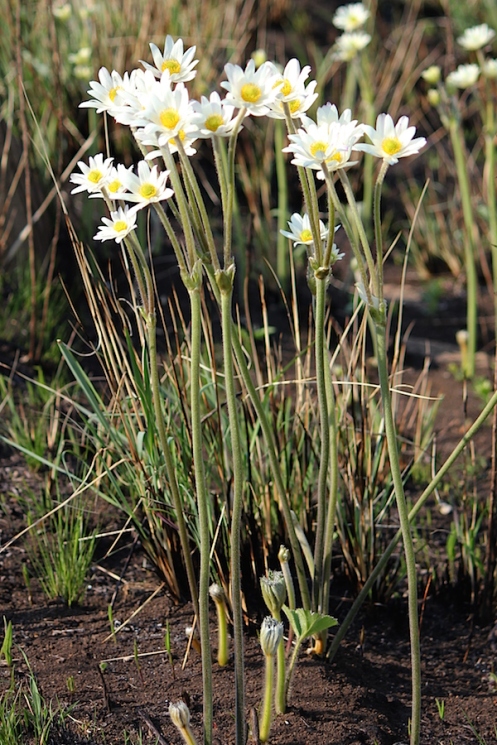
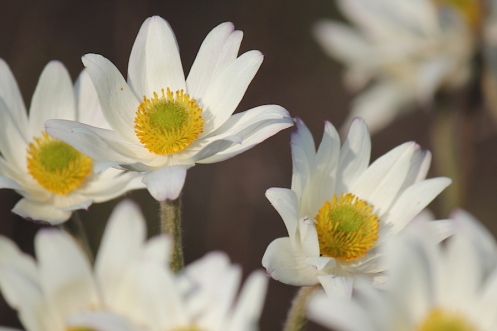
Anemone caffra;
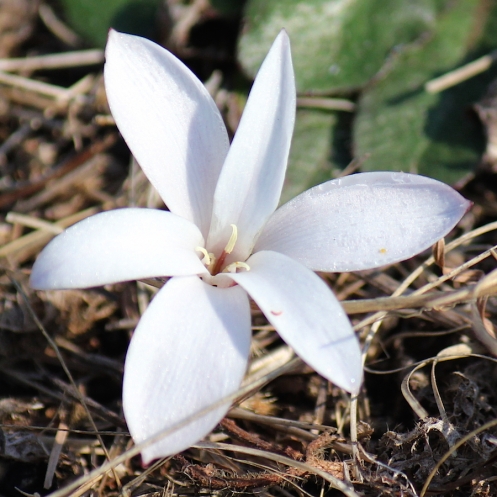
Apodolirion buchananii sparkle;
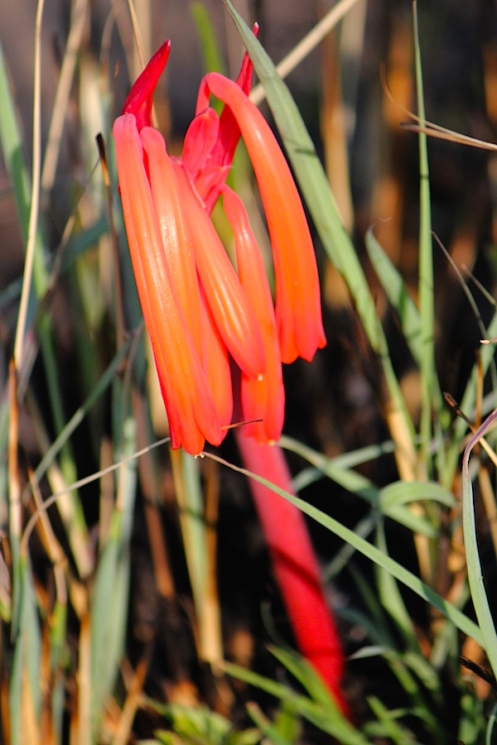

Cyrtanthus tuckii are bright red flames in new green grass growth;
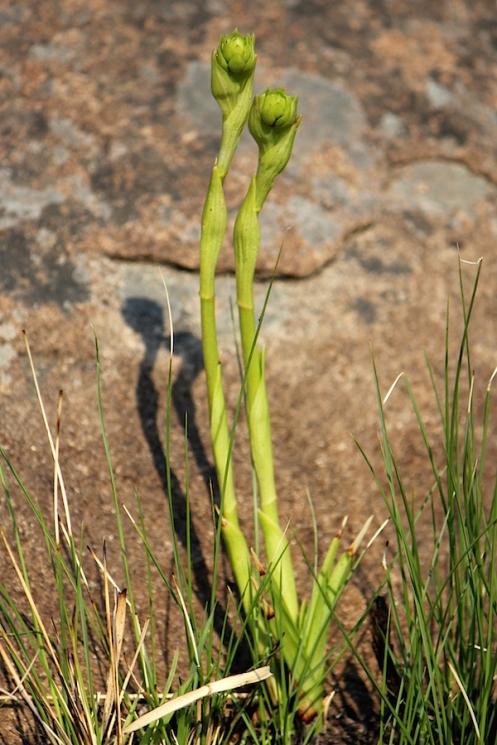
only one orchid shows signs of flowering, Eulophia parviflora (short-spurred form);

Gazania krebsiana flowers create spots of cheerful yellow;
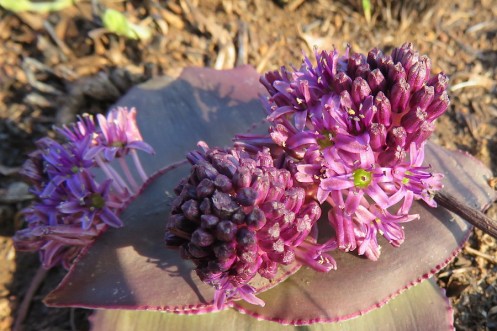
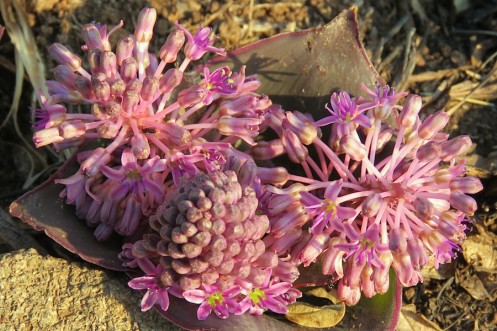
the stunning, delicate purple Ledebouria ovatifolia are prolific this year;
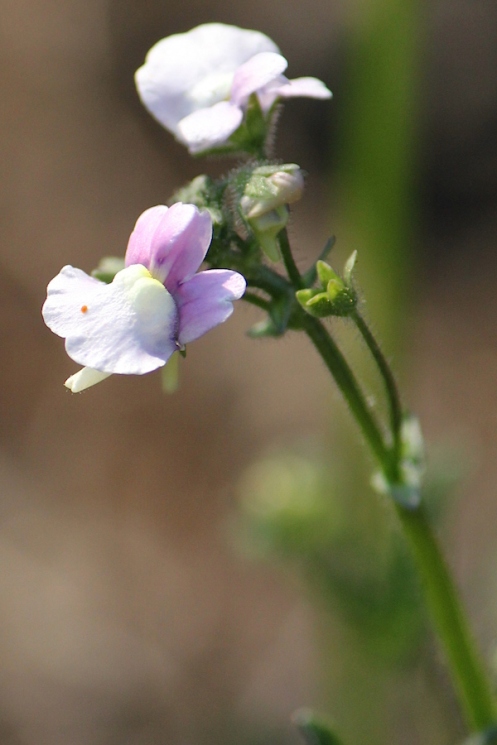
the occasional Nemesia caerulea is in bloom;
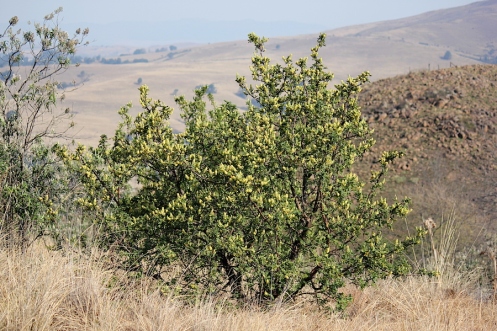
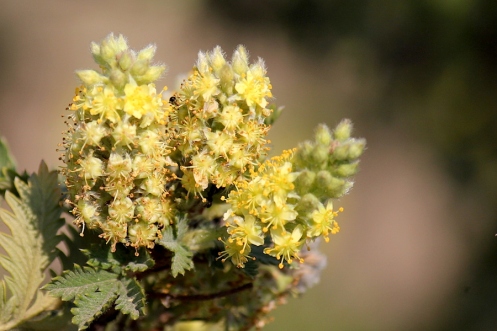
masses of Ouhout, Leucosidea sericea, blossom cover the small trees;
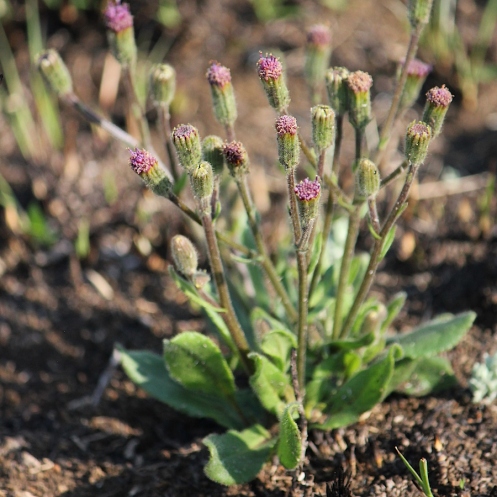
a very unassuming Senecio sp was almost overlooked;
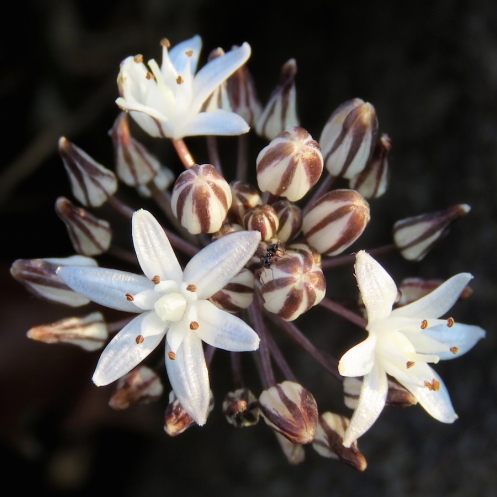
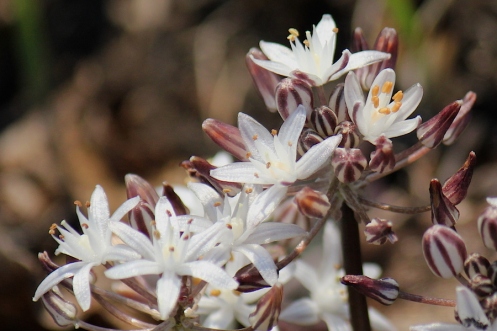
then this season there are many small clumps of the tiny, stunning Urginea capitata
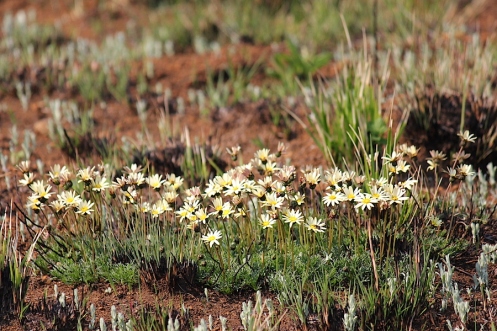
and the clumps of Ursinia tenuiloba have expanded creating mini insect hot-spots!
The birdsong at dawn is beautifully varied, birds in general are very active at the moment, busy courting and no doubt starting nest building.
A few of the insects I have spotted are:

Bees busy foraging in the available flowers;
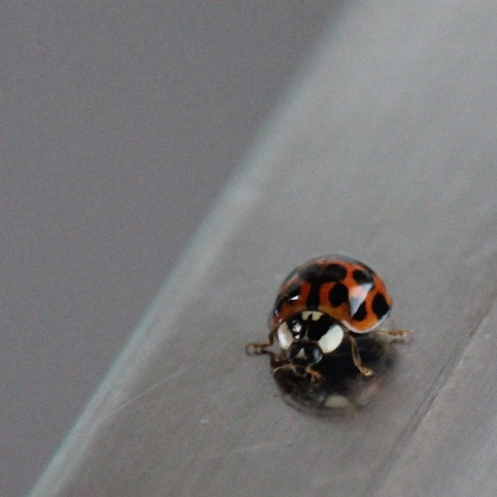
a Ladybird beetle on the kitchen sink, I haven’t seen the usual large hibernation groups in sheltered corners this year
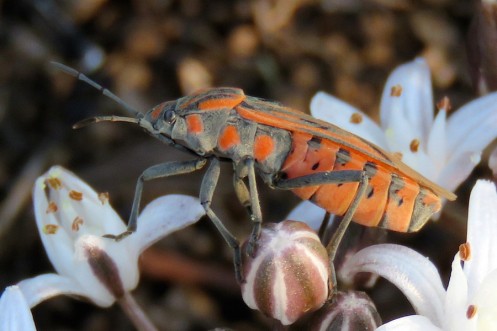
and a wonderful Milkweed Bug, Spilostethus sp..
Two Vervet Monkeys range over the rocky hillside regularly in search of food, they also raid the unripe Granadillas from the veggie garden, several times there have been ‘calling card, territory markers’ on the verandah.

Most evenings Common Reedbuck have been seen grazing on the new grass on the hillside, on one evening they were there together with the Grey Duiker and the Vervet Monkeys.
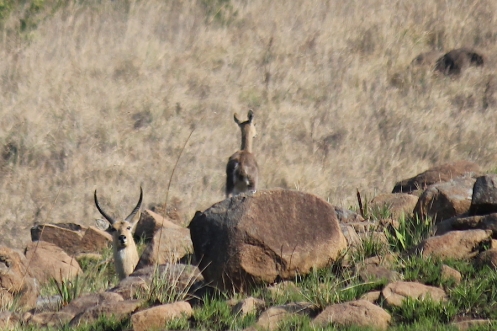
I also came across a group of three on the hillside late one afternoon.

The Grey Duiker was feeding close to the house during the day, when the weather cleared after the last cold front passed through.
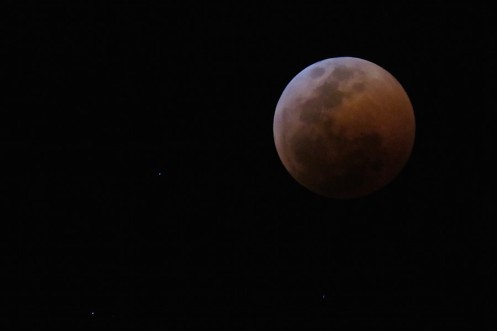
The total moon eclipse on the 27 July was a highlight, for once the skies were clear, littered with myriads of stars, and I watched entranced.
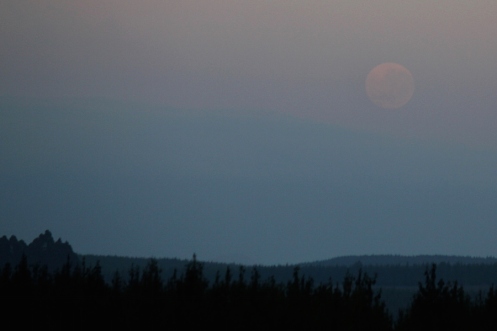
The following morning as dawn crept in the orb was a faint pink glow through the smoky air. There were only two mornings when there was a real chill of winter, the 4 and 16 July. A quiet, dry, hibernating month, but still nature persists and there were some magic moments.
The first was the delightful
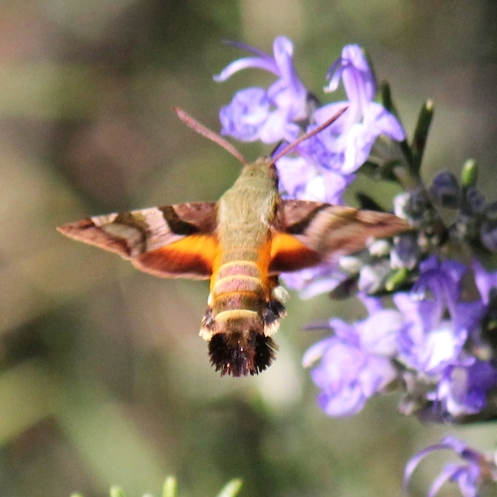
African Humming Bird Moth, Macroglossum trochilus ssp. trochilus
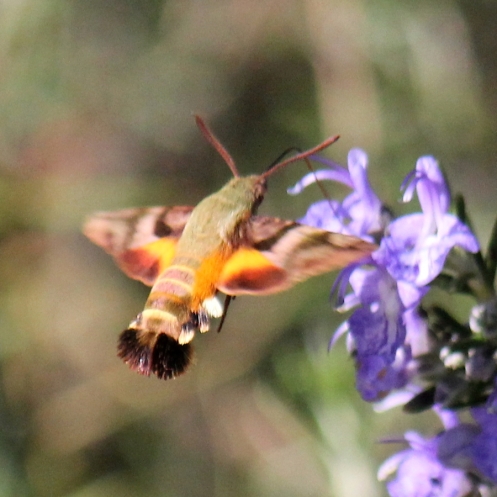
African Humming Bird Moth, Macroglossum trochilus ssp. trochilus
flitting over and amongst the Rosemary flowers. It moved really quickly, a quick sip here and there, so felt happy to capture these images.
Towards the end of July I came across this
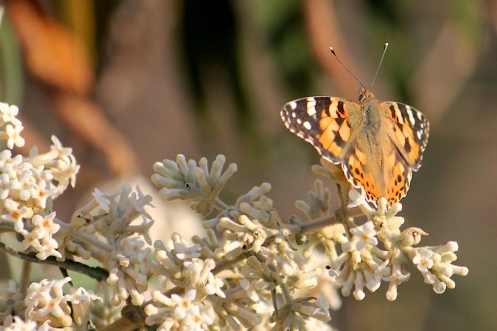
Painted Lady, Vanessa cardui, sunning on Buddleja salviifolia.
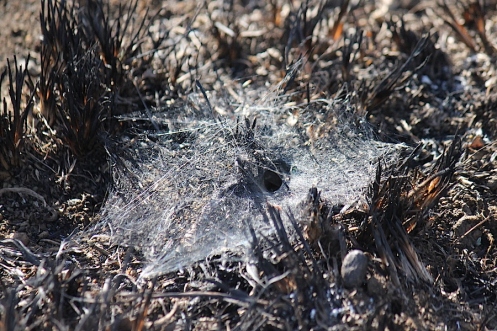
In a burnt firebreak I found a beautiful Spider web.
Then one evening as I was going to bed I saw what I thought were tiny specks of dust about 2mm long, near the bedside lamp. On closer inspection I realised they were
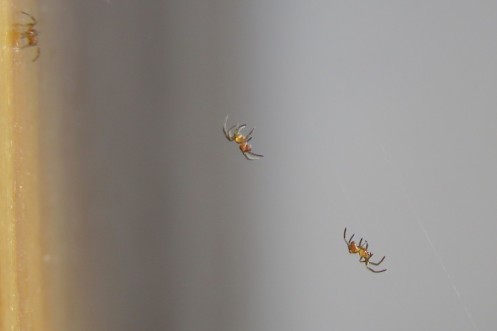
newly hatched Spiderlings! Already they had constructed fine lines of spider web from the lamp to the bedstead and were moving busily up and down.
Also in a burnt area
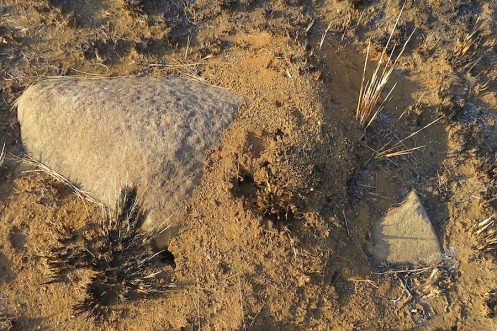
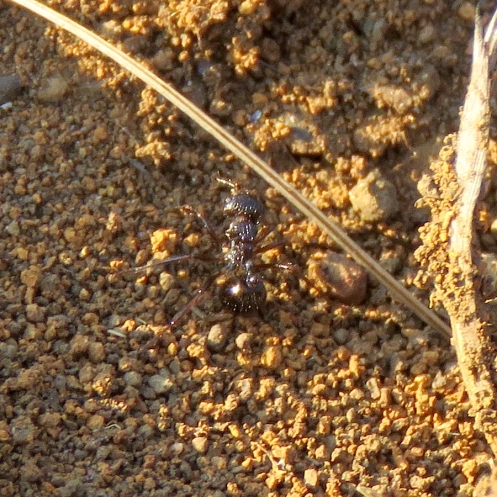
an Ants nest was revealed,

as was what I think is a Wasp nest.

Black-headed Orioles are back visiting the verandah as they do every July.

Cape White-eyes flit frenetically in bare branches.
Many birds love using the small birdbath on the verandah including the

Dark-capped Bulbul

Dark-capped Bulbuls.
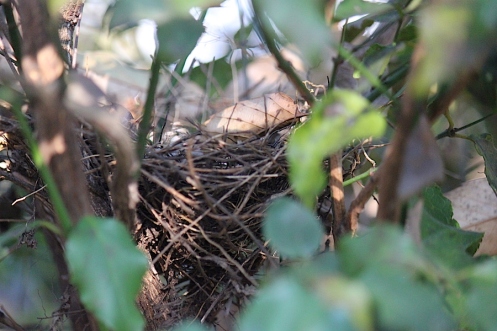
About a meter from the ground, well concealed in the thick foliage of a Tree Fuschia, Halleria lucida, I found a nest, which I think was made and used by Southern Boubous.
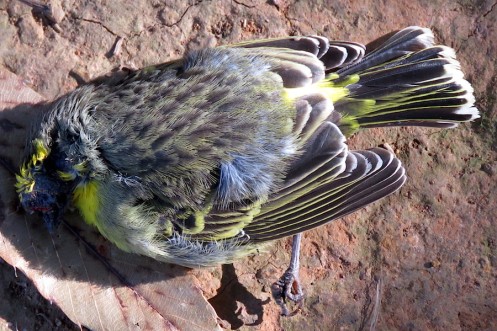
On the really chilly morning of 4 July I found a dead Yellow-fronted Canary lying on the ground.

On an early evening walk I spotted a young male Common Reedbuck, lying very still, watching me, very camouflaged in the dry grass.

In early predawn light a Grey Duiker stood quietly surveying the stillness.
July is a month when there are very few flowers out, however
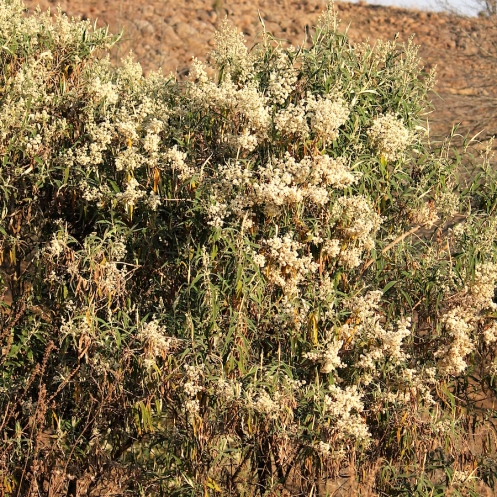
Buddleja salviifolia have finally started to blossom, a heady sweet scent fills the air and they are a magnet for many insects. We have two colour varieties,

a cream Buddleja salviifolia and

a lilac Buddleja salviifolia.
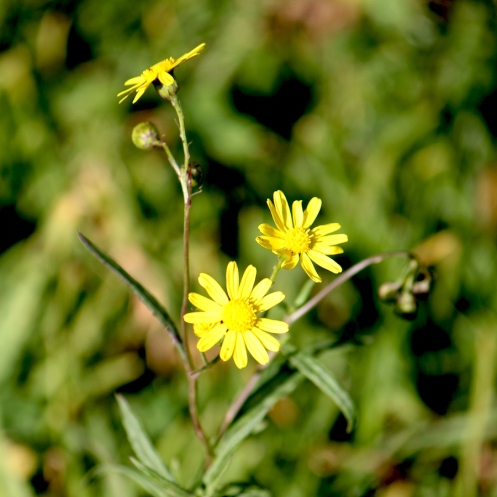
Euryops laxus sparkle in cool sunshine.

Gazania krebsiana have also started to appear.
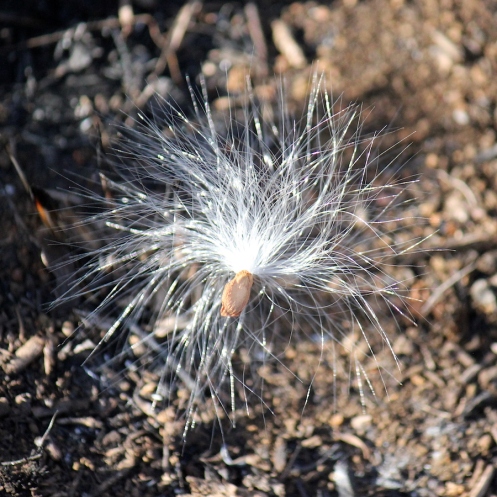
What I think are Pachycarpus natalensis seeds have burst from seedpods and drift over the dry landscape.
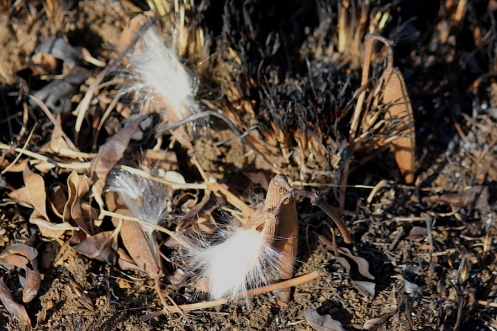

There were a few clumps of the delicate Ursinia tenuiloba.
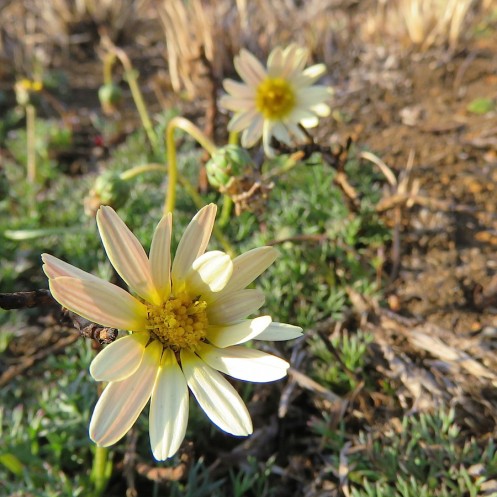
June has been a mild weather month, no really cold spells and very little frost.
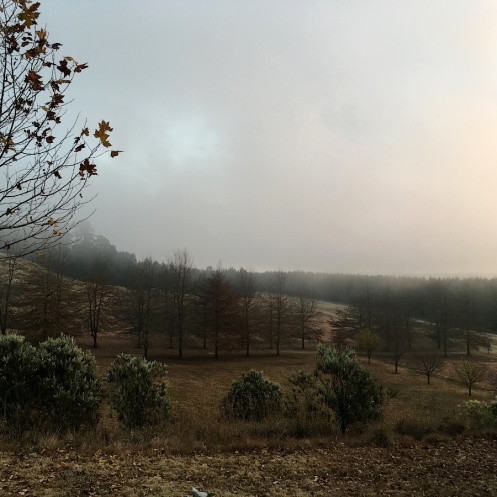
There have been some soft misty evenings and mornings,

but mostly deep cobalt blue, cloudless skies with the sun low at midday. On several occasions water bombing planes have flown over on their way to put out veld fires.
The flower of June has to be
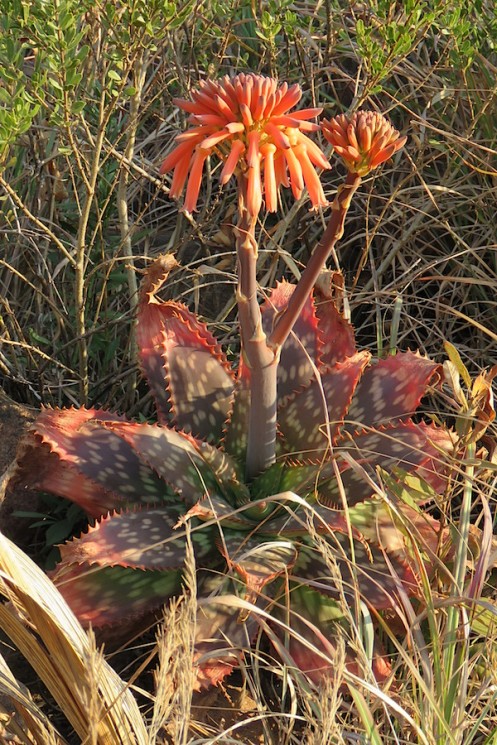
Aloe maculata!
Their bright colour glows on the hillside. On closer inspection the flower buds in various stages are simply amazing.

Aloe maculata
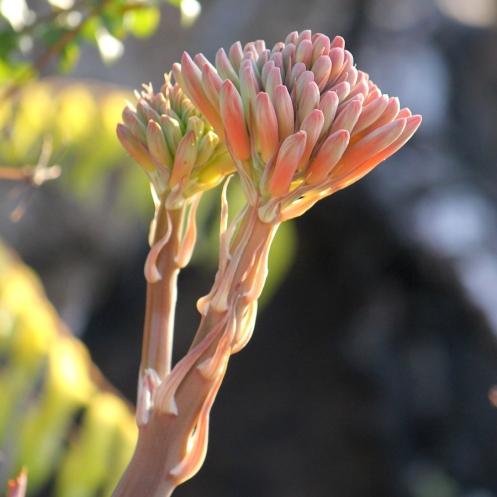
Aloe maculata
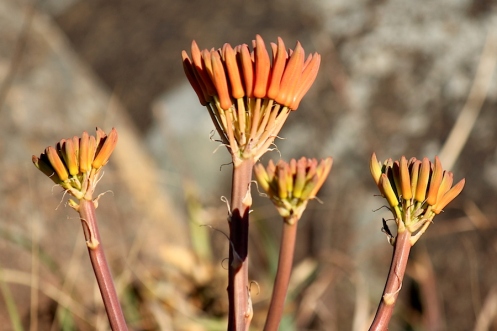
Aloe maculata
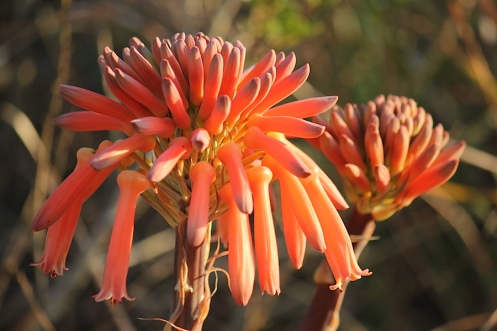
Aloe maculata

Aloe maculata
We have two colour variants, deep orange and golden yellow.
Other flowers out are 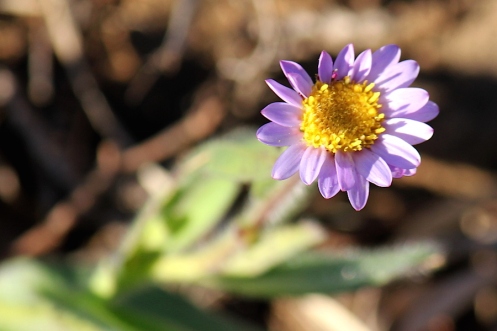
Aster bakerianus;
one of my favourite winter flowers,
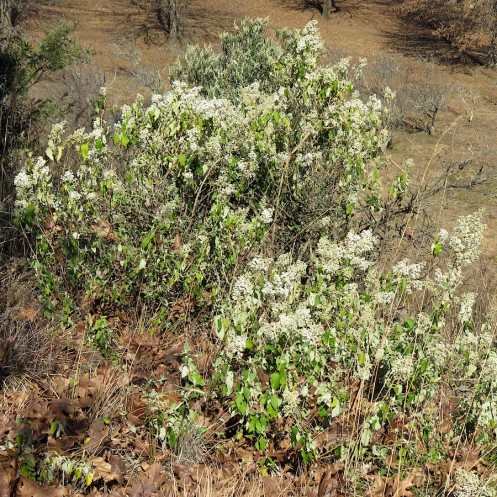
Buddleja dysophylla

Buddleja dysophylla
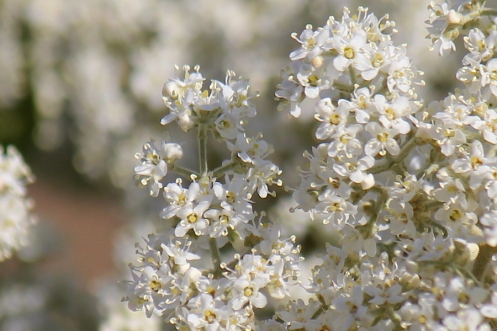
Buddleja dysophylla
lacy white snowdrifts of blossom sparkle against the subdued colours of winter;
on burnt tracer lines for fire breaks

Gerbera ambigua

Gerbera ambigua
have responded to the winter sun;
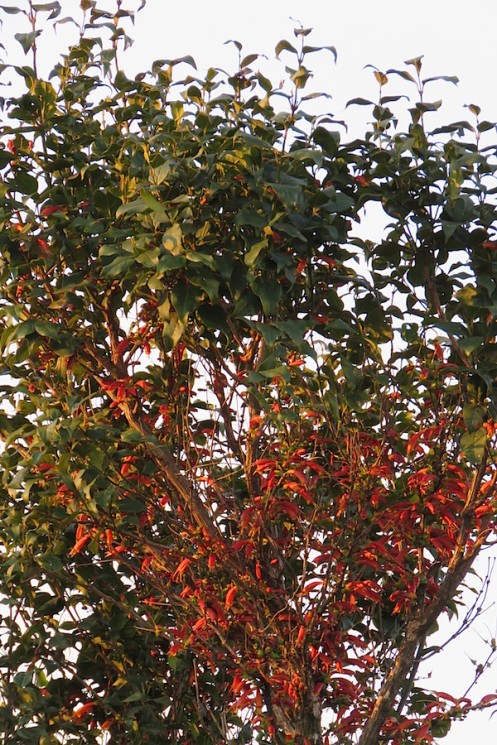
the Tree Fuchsia, Halleria lucida flowers glow red against the green foliage
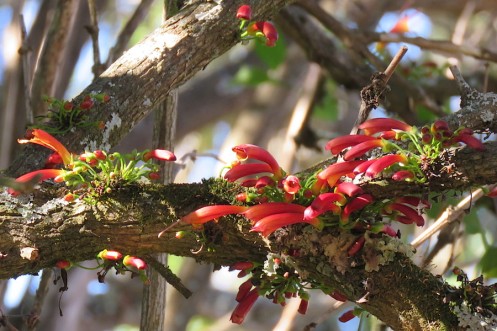
Tree Fuchsia, Halleria lucida
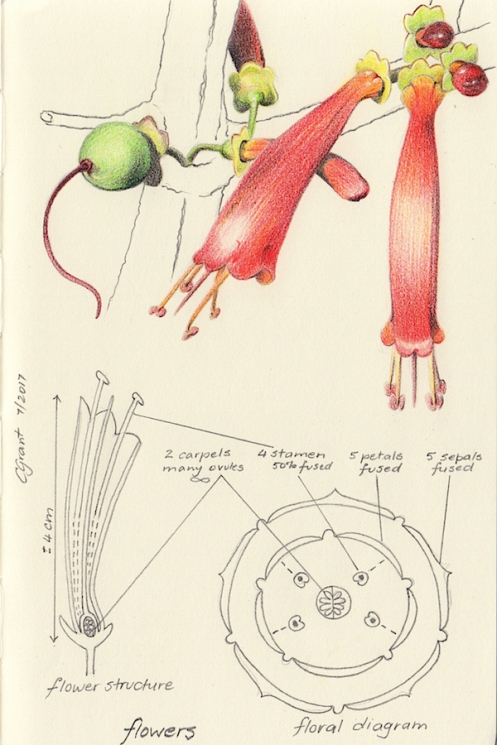
Tree Fuchsia, Halleria lucida
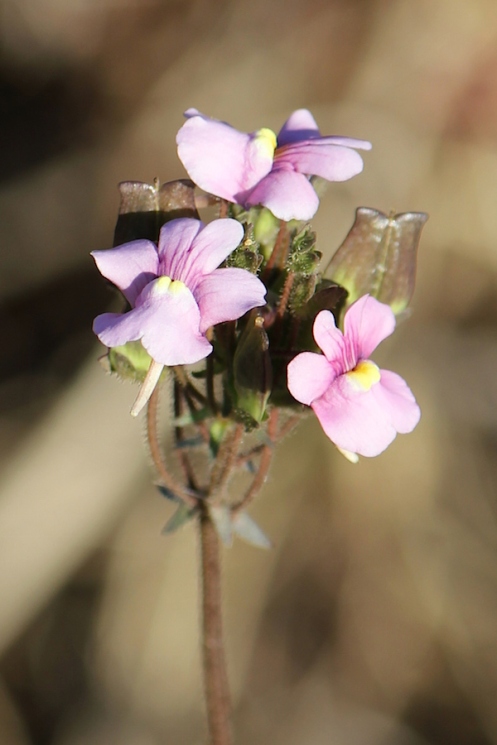
Nemesia caerulea;

Otholobuim polystictum;
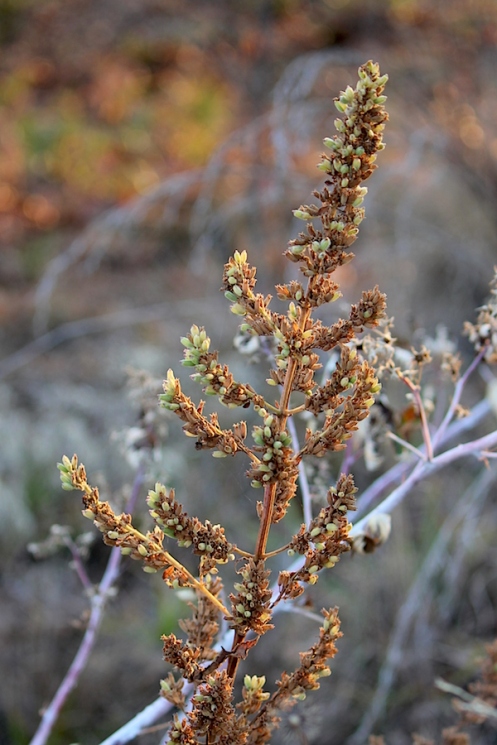
Plectranthus calycina seeds and

Watsonia confusa seed, with dried flowers still attached to the inflorescence.
As the leaves dry and fall

an Ants nest was exposed.
A treat was to see
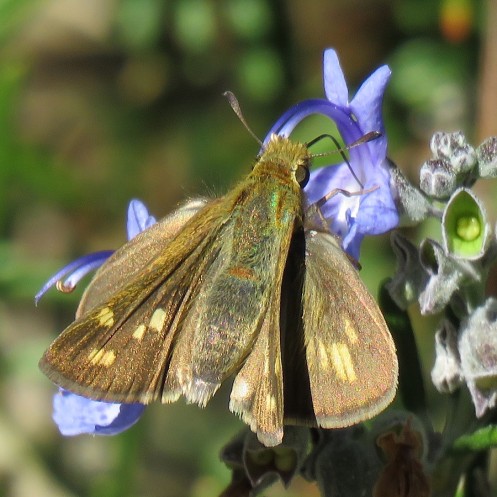
Common Hottentot, Gegenes niso subsp. niso butterflies, female

Common Hottentot, Gegenes niso subsp. niso butterflies, male, last observed in 2013.
One morning I heard a buzzing and realised that

Honey Bees, Apis mellifera,
were intent on making the chimney the site for their next hive.
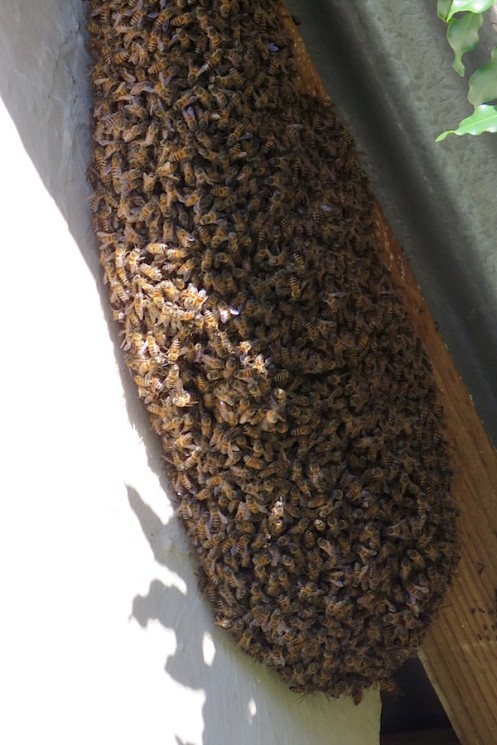
Honey Bees, Apis mellifera,
I lit a fire, and they soon swarmed away to the north end of the house. They settled there for two and a half days before flying off, to hopefully a better new site.
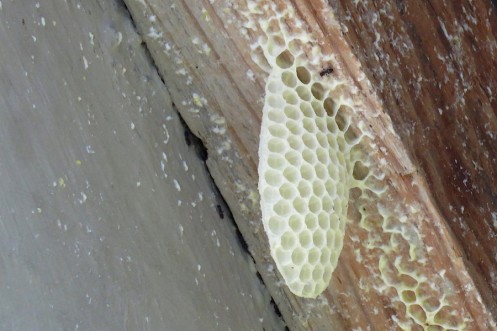
Left behind was a small comb of wax.
Perhaps if they hadn’t found another site they would have continued building vertical parallel combs and settled, though it wouldn’t have been an ideal, protected site for the hive.
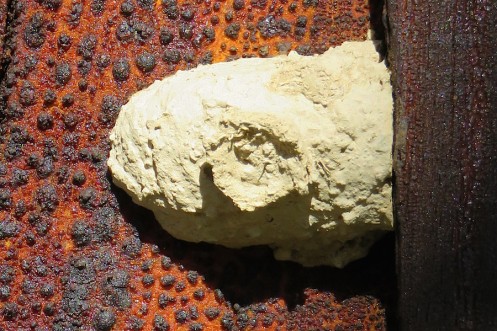
A beautifully made clay nest on wooden slats, I think, was built by a Potter Wasp possibly Synagris analis, as I have seen them flying around, black wasps with a distinctive yellow tip to the abdomen.
The Bush Pig crashed through the fence, breaking the wire strands, proving how strong they are! There were several occasions when I saw the Common Reedbuck grazing near the house, and Grey Duiker wander through the garden early in the morning and at dusk. Quite frequently the Black-backed Jackal called in the early mornings and evenings.
There are many birds around, Cape White-eyes, Bulbuls and the Cape Robin-Chats flock to the birdbath on the verandah, Southern Boubous and Black-headed Orioles call melodiously. A pair of Red-winged Starlings have decided that the top of the pantry cupboard would make a good roosting place in the evening, so we have to keep the backdoor closed in the late afternoon!
May has been a quiet month, settling into winter.

The grasses are particularly lovely. The first snow on the Drakensberg fell on the 12 May, however we didn’t see the mountains for several days as they were shrouded by low clouds.
One morning I watched entranced, as a False House Button spider, Theridion species, tried to carry a moth to a safe place to feast on it. The tiny spider, only ±4mm body length, eventually gave up and fed where it had caught it!
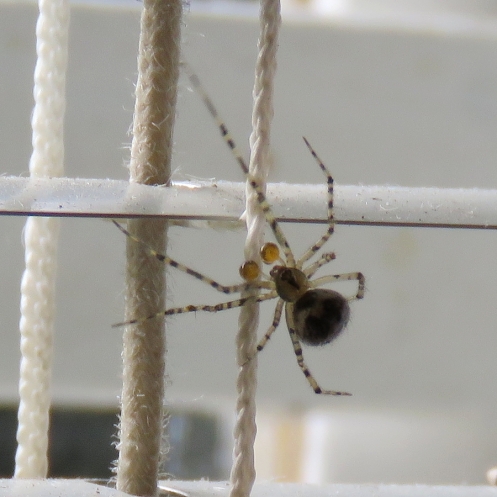

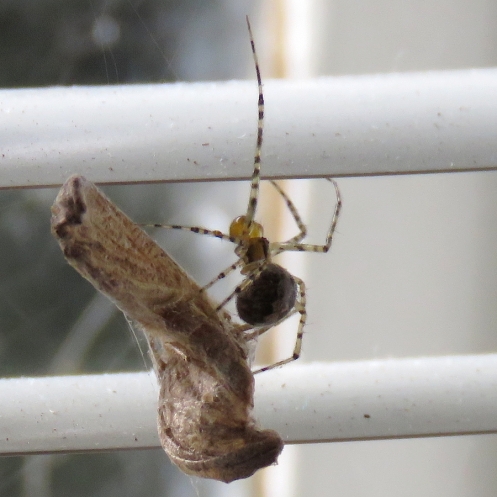
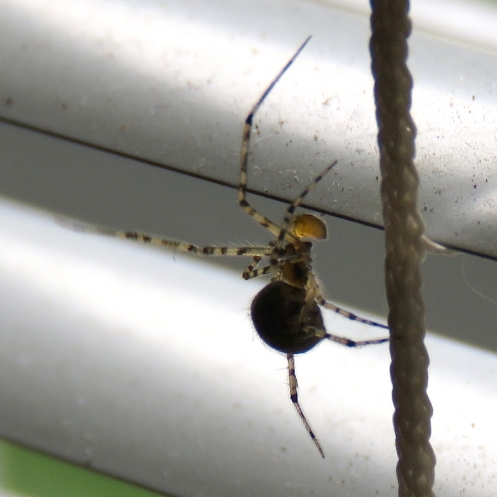

False House Button spider, Theridion species
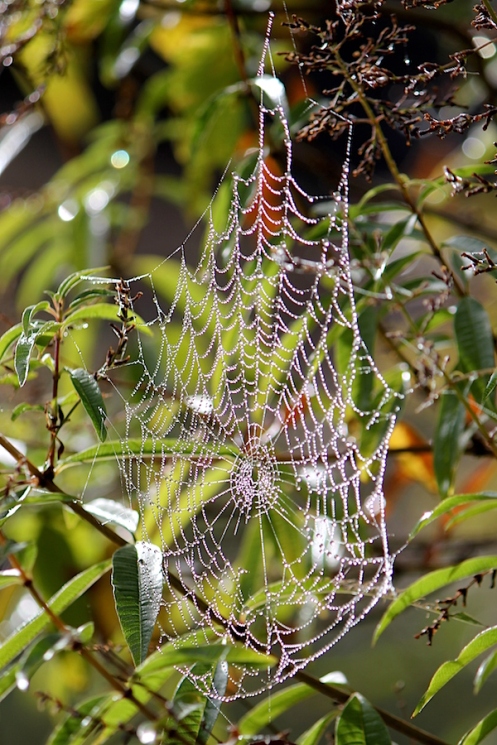
A bejeweled dew spangled spider web glistened in the morning sun.
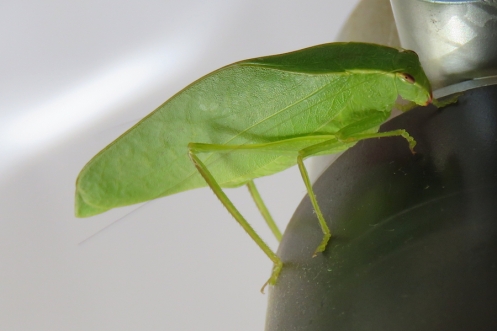
A Leaf Katydid possibly a Eurycorypha species, and possibly a nymph flew inside the house, Philip found it in his office and called me to come and see it!
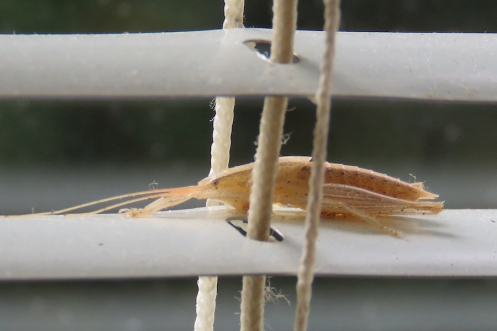
A curious shrimp like insect, which I think might be a Wingless Meadow Katydid, possibly a Megalotheca species, rested on the kitchen blind.
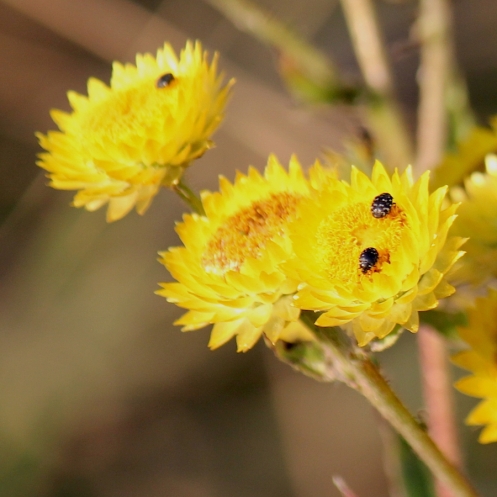
One of my favourite, minute beetles, the Museum Beetle, was out in masses feeding on Helichrysum cooperi.
Very few flowers to be seen this month,
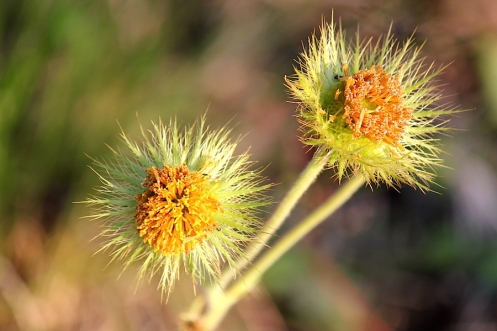
this Berkheya setifera had lost all the bright yellow bracts leaving the tiny flowers massed in the center behind.
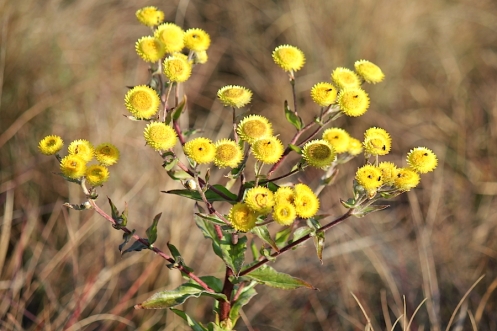
There were still a few Helichrysum cooperi flowering.
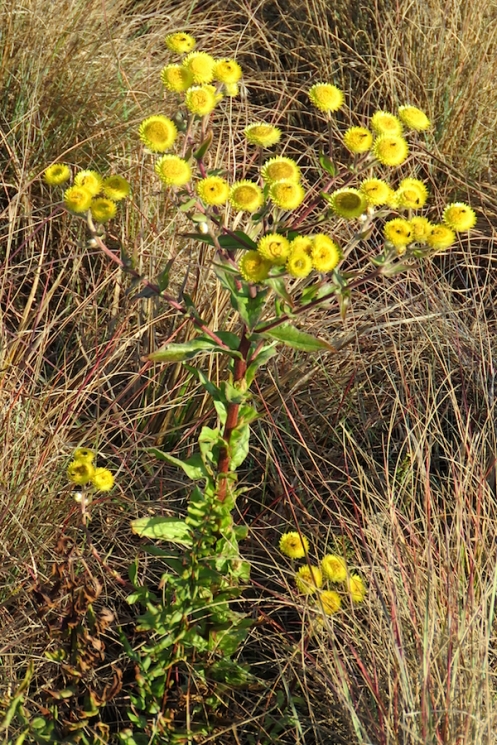
Helichrysum cooperi

Some of the leaves of the Ouhout, Leucosidea sericea have turned yellow.
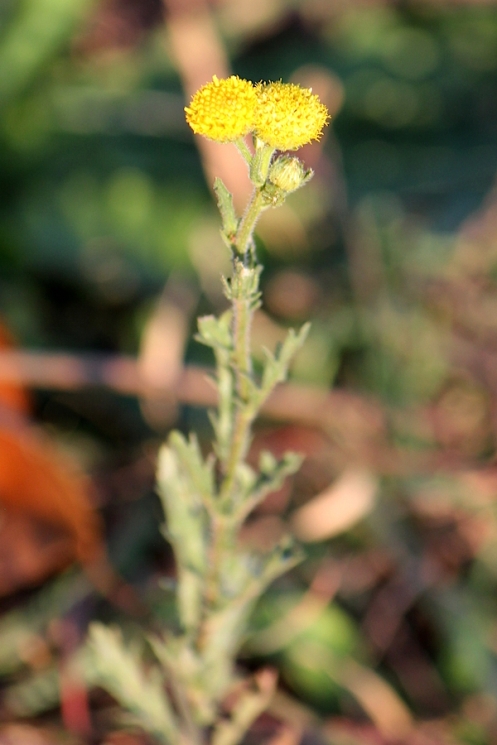
A small bright spot was created by a Schistostephium crataegifolium.

Searsea discolor leaves are vibrant orange.

There are also still several Senecio polyanththemoides plants flowering,
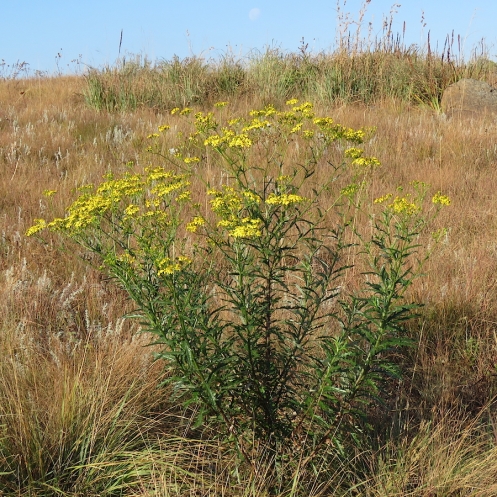
Senecio polyanththemoides
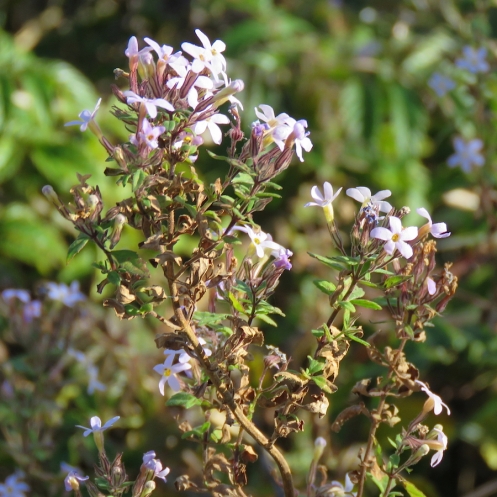
as well as Sutera floribunda.
As the grasses brown the vibrant green
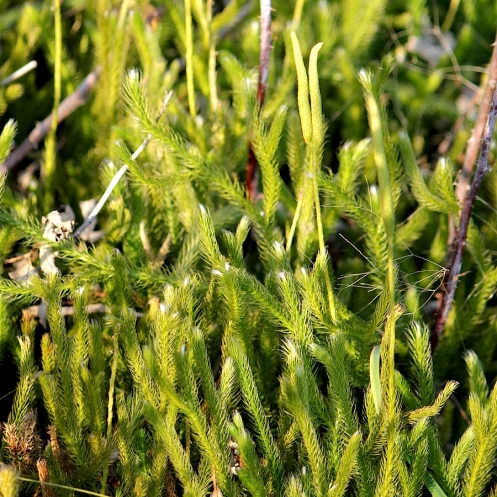
of the Fern Ally, Lycopodium clavatum
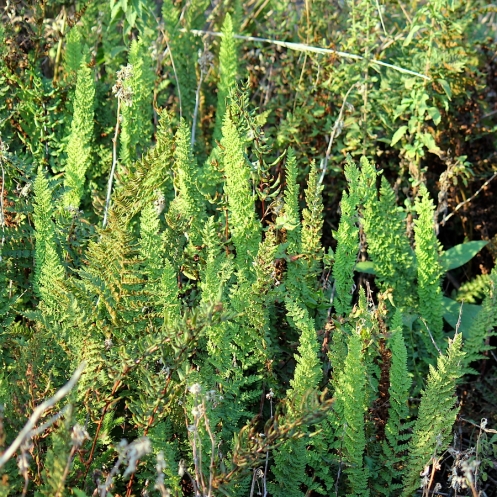
and the Cheilanthes hirta fern stand out.
There were several occasions when I saw the Common Reedbuck,
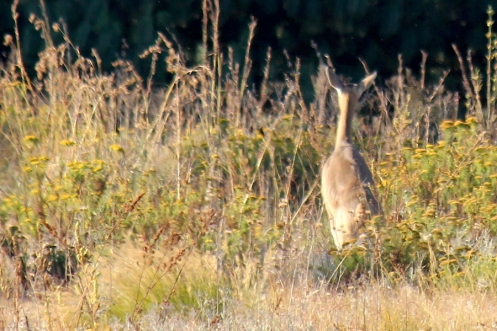
a female bounded off one early evening,
they are often seen grazing near the house, as well as Grey Duiker. Quite frequently the Black-backed Jackal called in the early mornings and evenings. A special sighting was a large, very dark coloured Bush Pig making his way to feed on fallen acorns on the driveway.

Also wonderful to find a Porcupine quill on the grass.
The evocative call of the Fish Eagle floated up from the valley on a few occasions. I was thrilled to hear the Spotted Eagle Owl calling, haven’t heard them for several months.
April has been an unusually wet month, good for the water table going into winter.
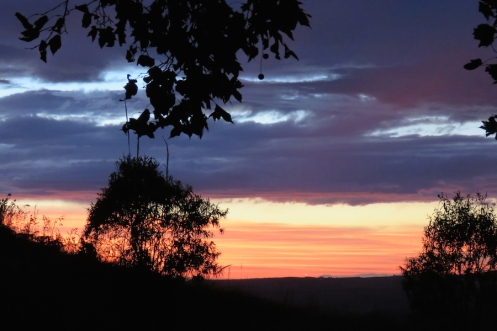
The cloud effects at dawn and dusk, when the clouds cleared were stunning.
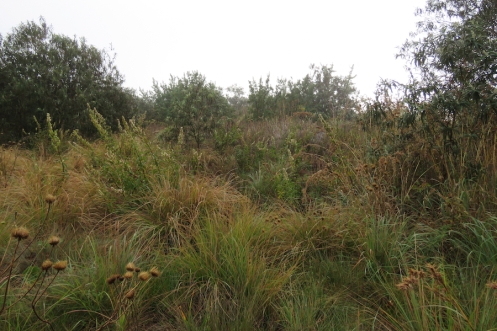
The warmth of colour in the grasses cheer up the chilly mornings and evenings.
On a short walk I discovered what initially I thought was a ladybird beetle, on closer inspection it turned out to be
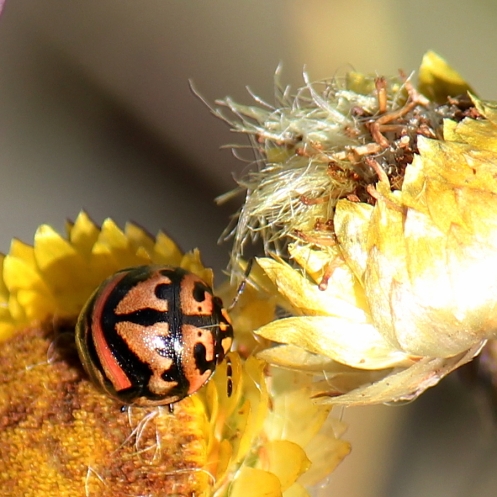
Sphaerocoris testudogrisea!
A first for me here! An ammended identifcation through iNaturalist.
Two different Antlion species flew inside, staying long enough to photograph them, their delicate lacy wings are stuff of fairy tales,

a Grassland Antlion, Neuroleon

and a Mottled Antlion, Palpares caffer.
Other insects seen were:
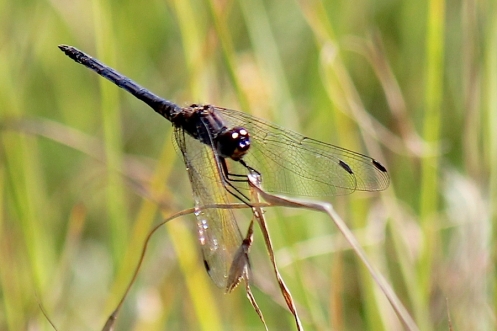
a Highland Dropwing male, Trithemis dorsalis;
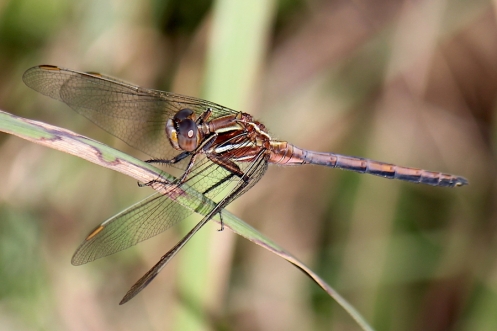
a Two-striped Skimmer female, Orthetrum caffrum;
beautiful butterflies,
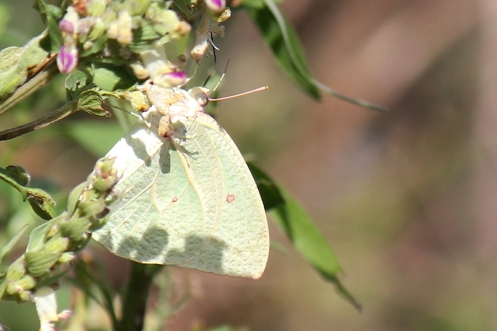
African Migrant (male), Catopsilia florella;
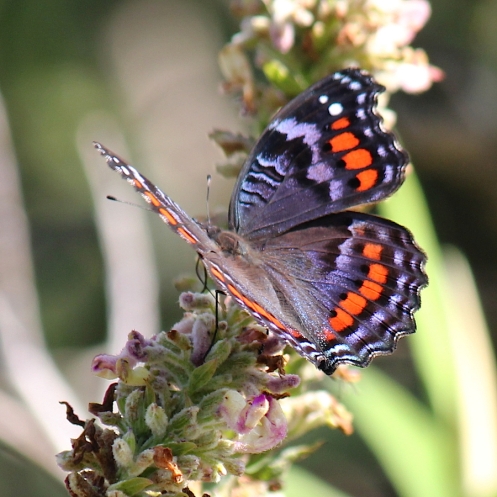
Gaudy Commodore (winter form), Precis octavia sesamus;
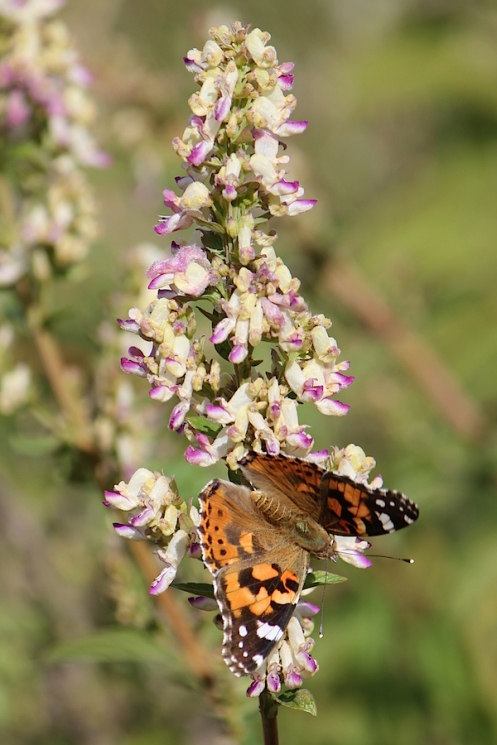
Painted Lady, Vanessa cardui on Plectranthus calycina;
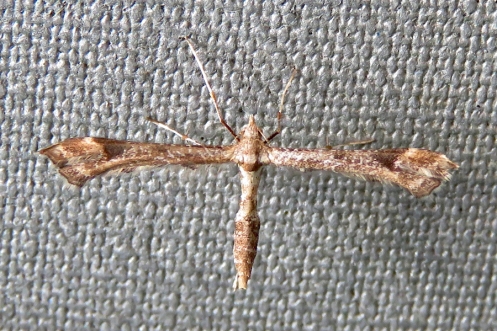
a Plume moth sp. Family Pterophoridae

and a Fly of the Philoliche species.
One dewy morning spiders webs sparkled with jeweled waterdrops,

Black and white hammock-web spider, Family Linyphiidae Microlinyphia sterilis;
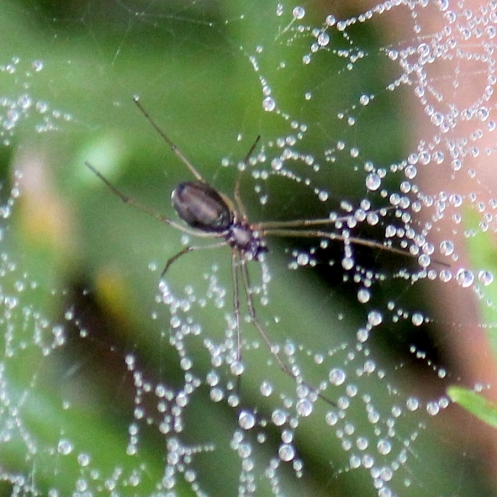
Black and white hammock-web spider, Family Linyphiidae Microlinyphia sterilis;
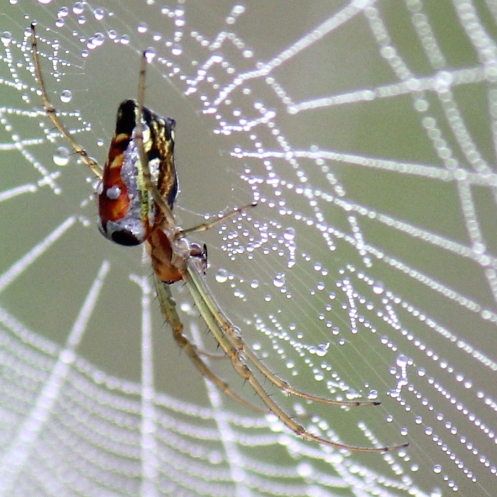
a stunning Masked vlei spider, Family Tetragnathidae Leucauge decorata;

Tropical tent-web spider, Cyrtophora citricola
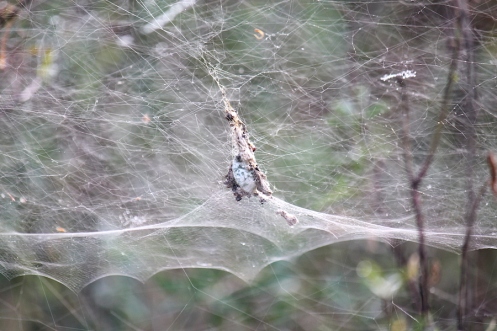
Tropical tent-web spider, Cyrtophora citricola
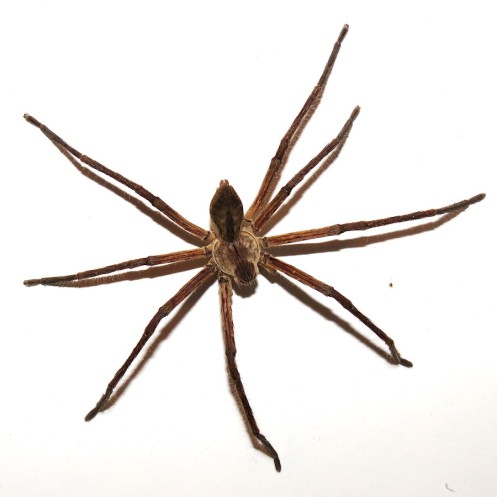
and a wise Rain spider, Family Heteropodidae Genus Palystes kept dry inside!
As a result of the rainy, damp conditions fungi popped up everywhere, some of them were:

Amanita rubescens;
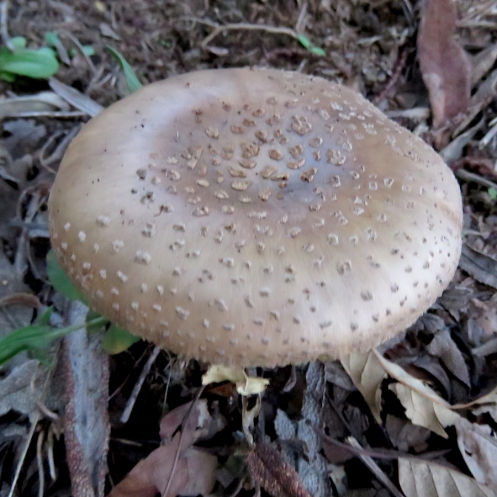
Amanita rubescens;
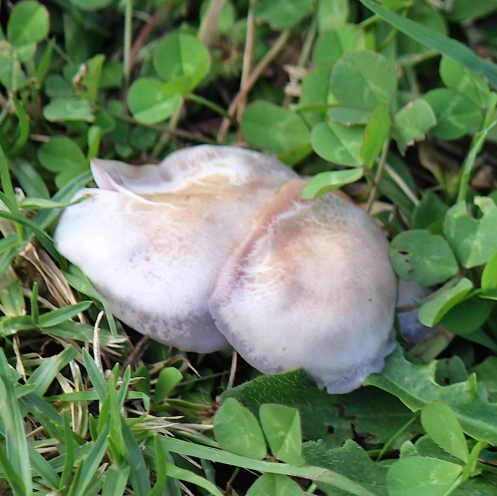
Deceptive mushroom Lepista caffrorum, that make fairy rings in the lawn;

Small Pine Cap Gymnopilus penetrans
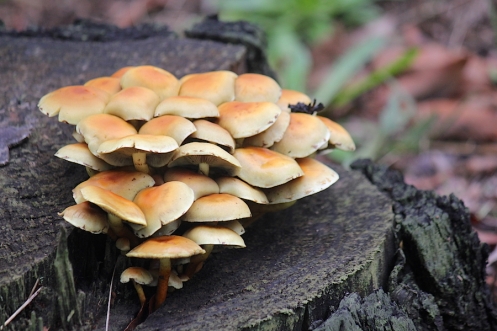
and Sulfur Tuft Hypholoma fasciculare.
There are still some flowers out, this
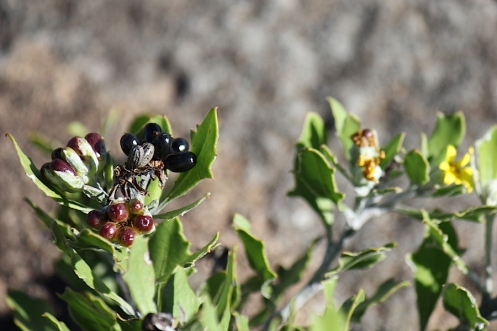
Bush-tick Berry Chrysanthemoides monilifera subsp. canescens shows just how it earned its common name;
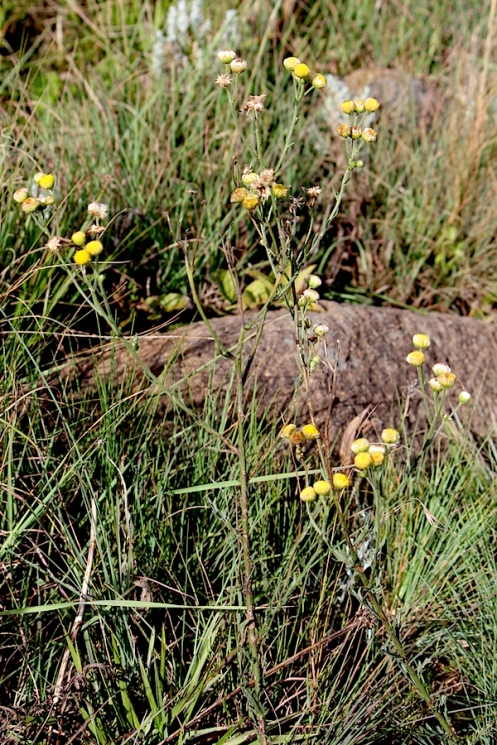
a scraggly plant I hadn’t noticed before Schisstostephium heptalobum;
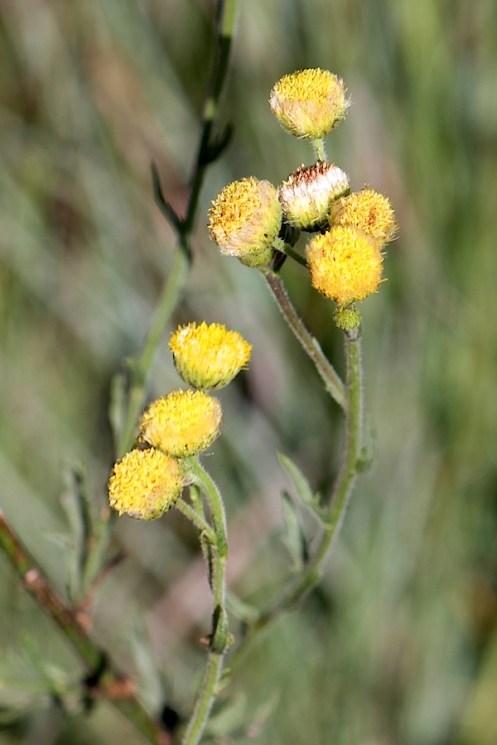
Schisstostephium heptalobum;
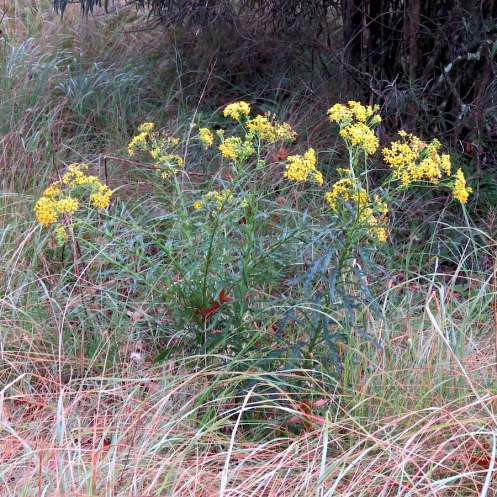
Senecio polyanththemoides
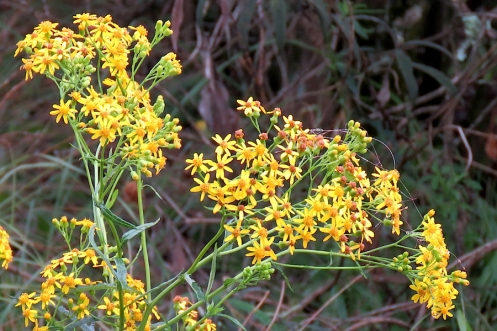
Senecio polyanththemoides with showy yellow flowers;
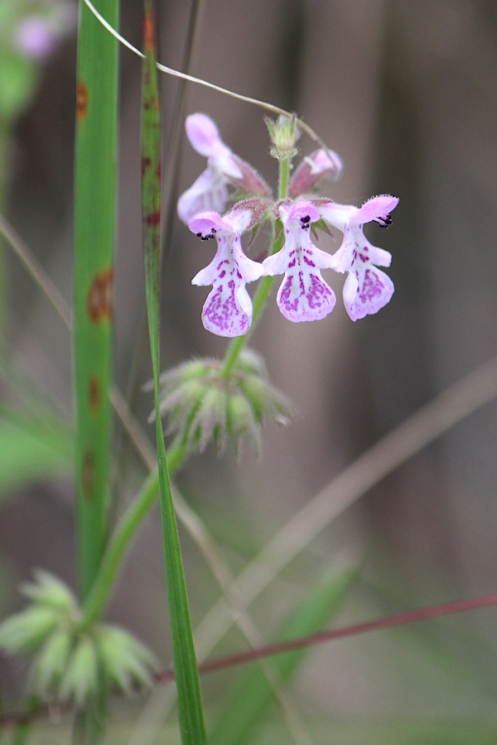
the resilient Stachys aethiopica;
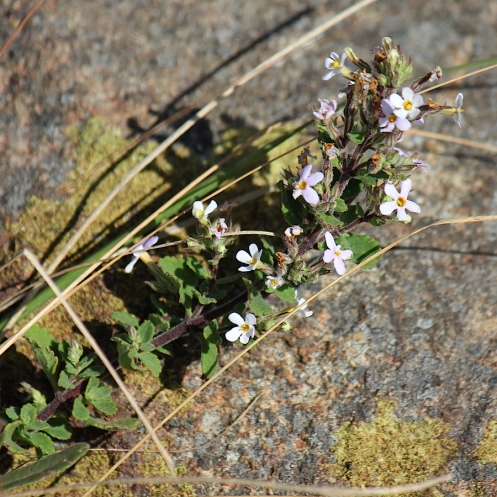
delicate Sutera floribunda
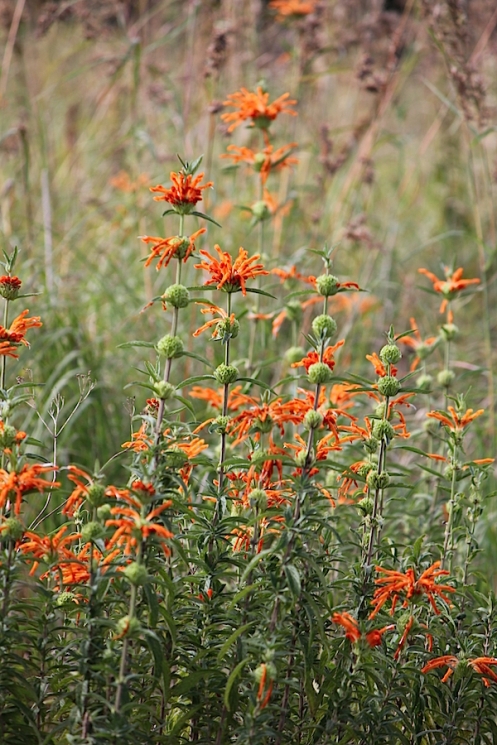
and The Flower of Autumn, Wild Dagga Leonotis leonurus.
There were several occasions when I saw the Common Reedbuck and Grey Duiker, quite frequently the Black-backed Jackal called in the early mornings and evenings.
The evocative call of the Fish Eagle floated up from the valley on a few occasions, I was lucky to see an African Hoopoe foraging in the grass and briefly an African Harrier-Hawk flying awkwardly between trees, a yellow face so no longer in breeding colour when the face is pink or reddish.

Autumn is here, cooler mornings and evenings. Yellow and gold are the predominant colours this month,
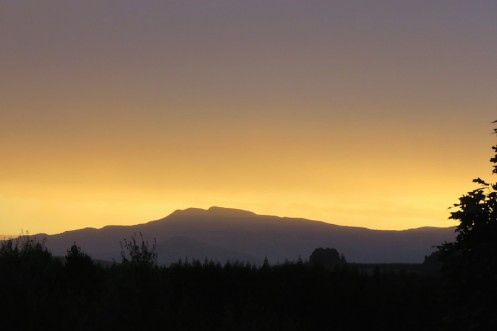
reflected in this stunning sunset. Despite a few very hot days, we had heavy rain, about 150mm and many misty days.
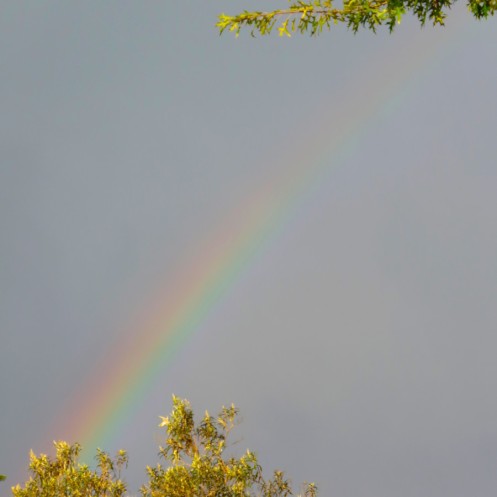
This beautiful rainbow appeared when the rain ceased one evening.
Many of the autumn flowers have appeared; just one orchid,
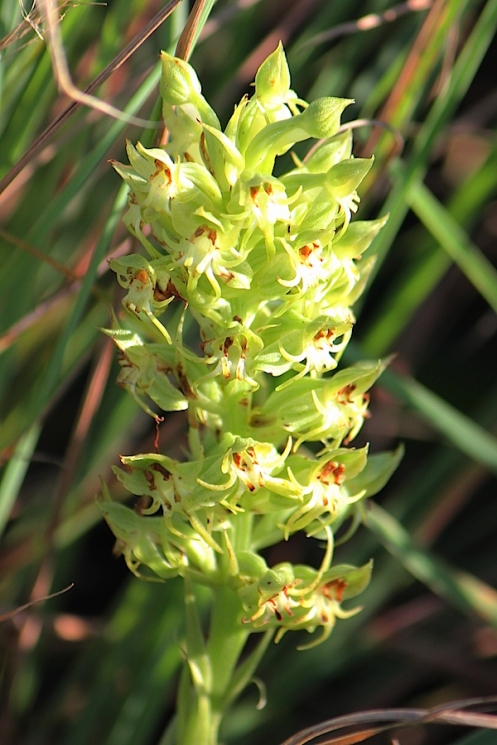
Habenaria lithophila;
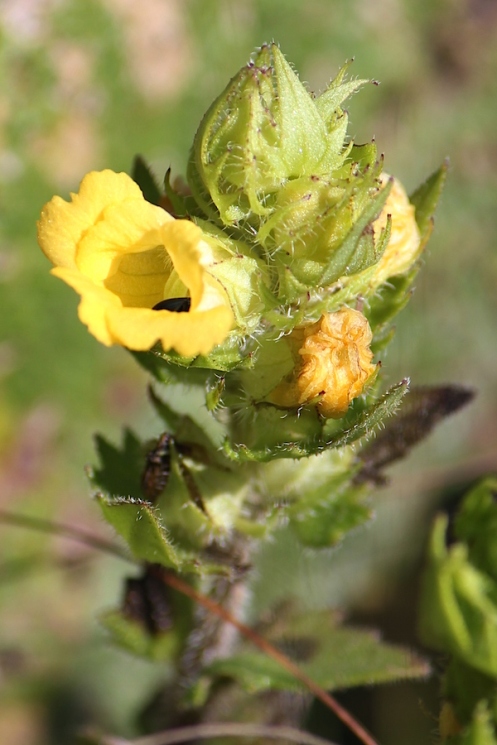
Alectra sessiliflora, parasitic on grass;
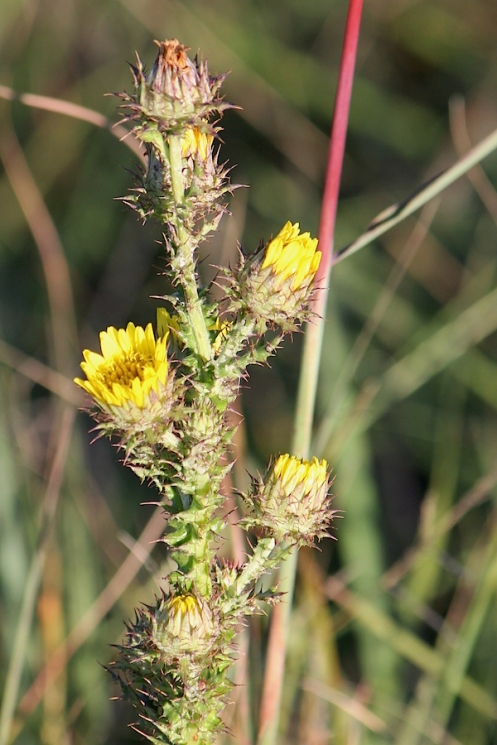
Berkheya rhapontica;
there are still a few
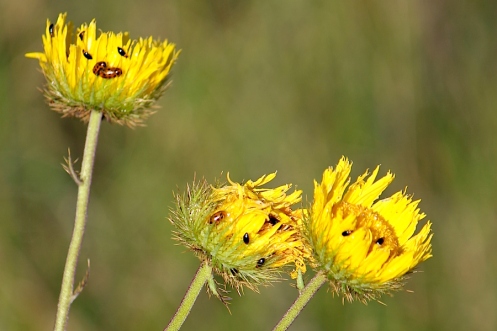
Berkheya setifera flowers,
much enjoyed by a variety of small beetles, but most are over for the season;

Berkheya setifera
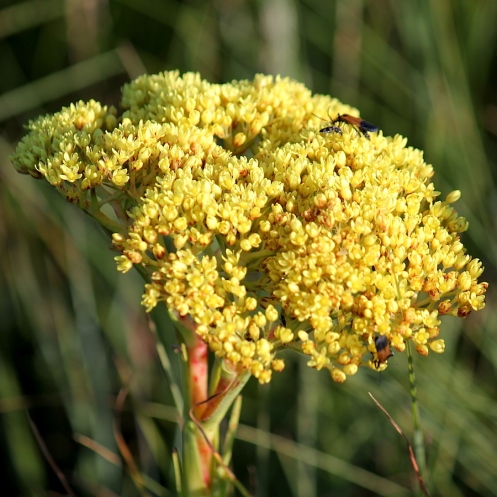
Crassula vaginata;
many different grasses have seeded including
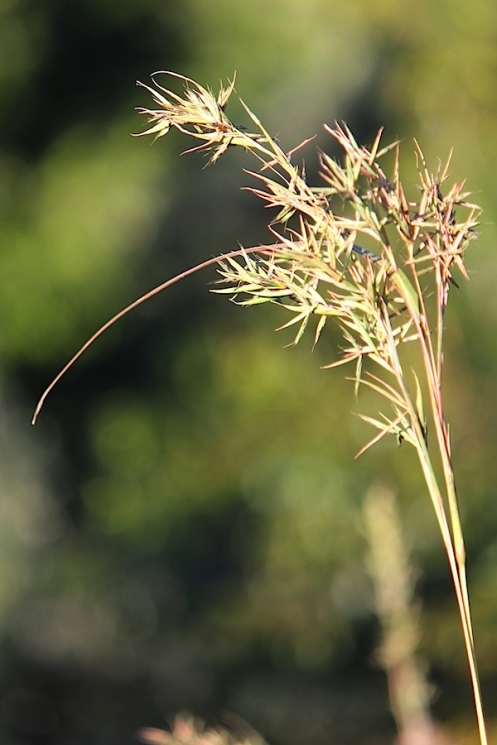
Cymbopogon excavatus, Broad-leaved Turpentine Grass;
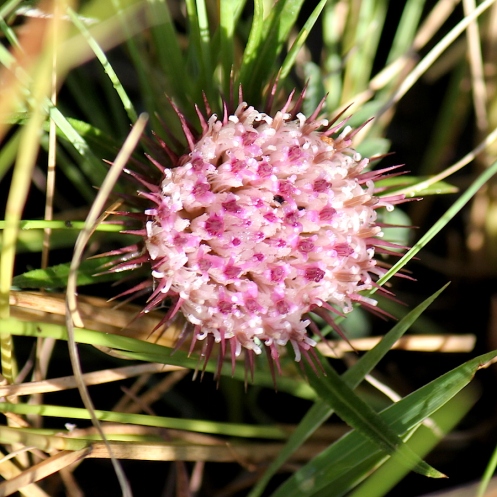
Dicoma anomala;
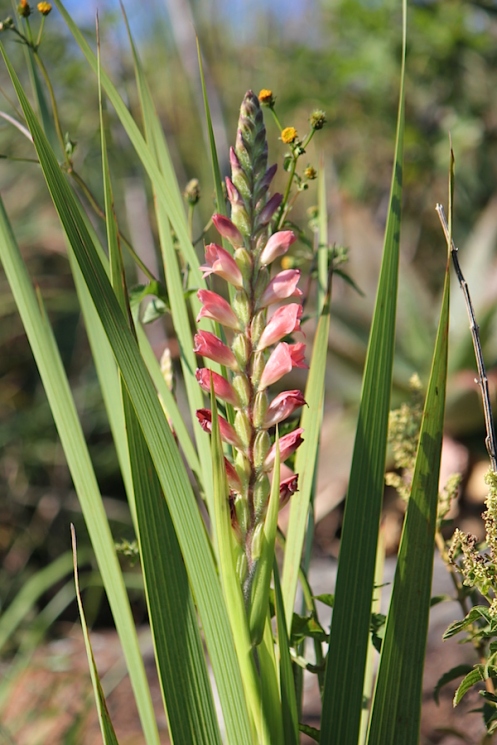
salmon coloured spears of Gladiolus sericevillous;

Gladiolus sericevillous;
swathes of bright yellow
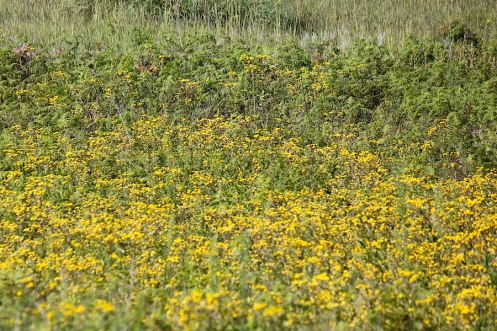
Helichrysum cooperi;

Helichrysum cooperi;
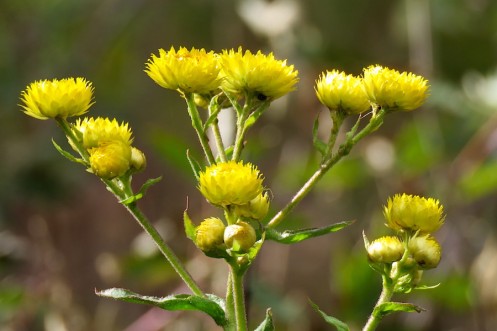
Helichrysum cooperi;
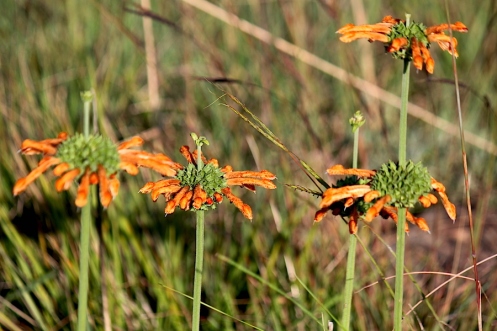
Leonotis intermedia;

Nidorella auriculata;
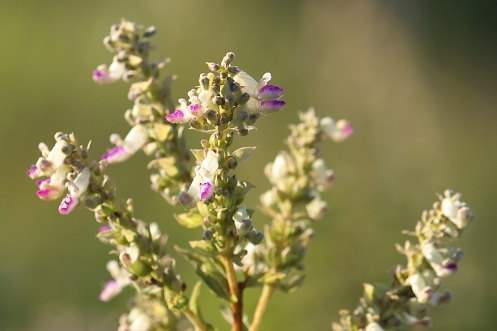
Plectranthus calycina;
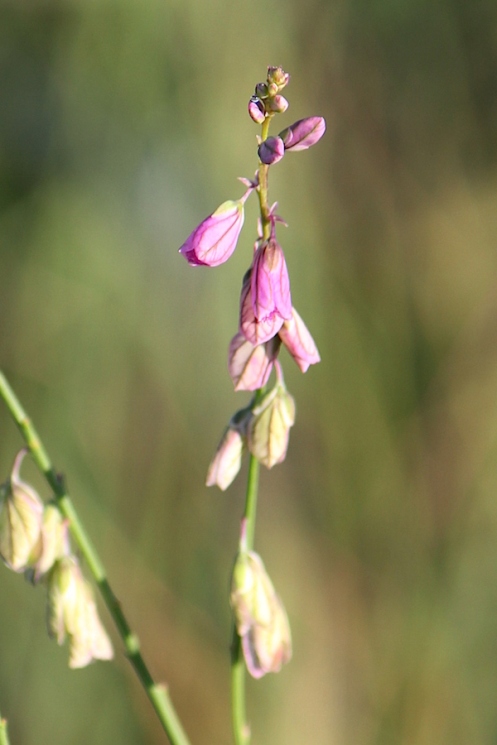
Polygala hottentotta and

Zaluzianskya microsiphon.
As a result of the wonderful rain many fungi appeared;

Amanita phalloides;
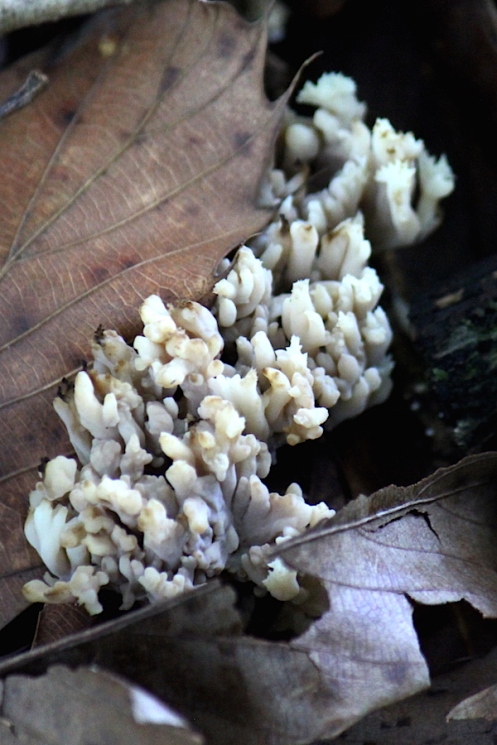
Clavulina cristata, Crested Coral Fungus,
which according to my field guide is uncommon;

False Earth Star;

a delightful smaller fungi which I have yet to identify;

possibly one of the Termitomyces species and
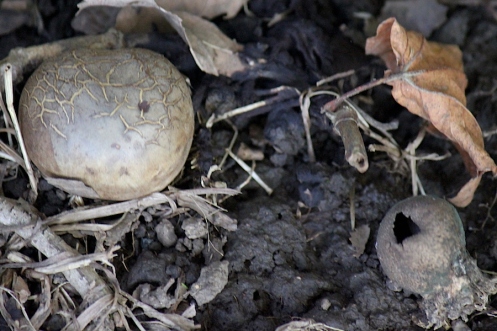
Scleroderma cepa, Smooth Earth-ball.
Suddenly we have multitudes of insects!

This Papilio ophidicephalus, Emperor Swallowtail
really didn’t want to be photographed and I wasn’t able to take a photo of the stunning Papilio nireus lyaeus, Green-banded Swallowtail;
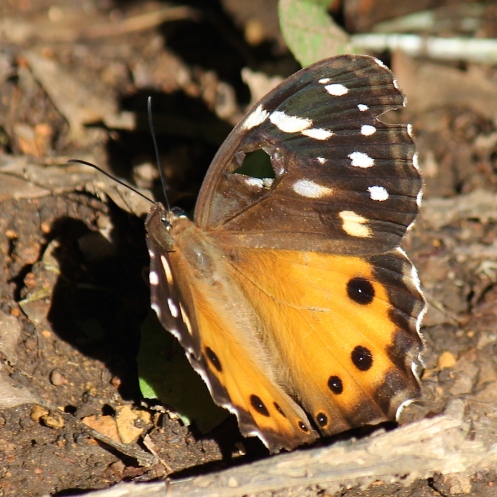
although rather weather beaten this Paralethe dendrophilus, Bush Beauty / Forest Beauty was flying strongly;
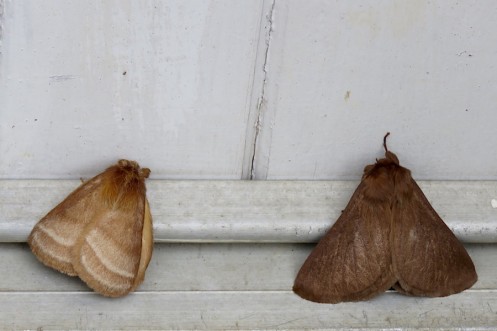
an unidentified moth rested with a Phyllalia patens, Clay Monkey on the backdoor;
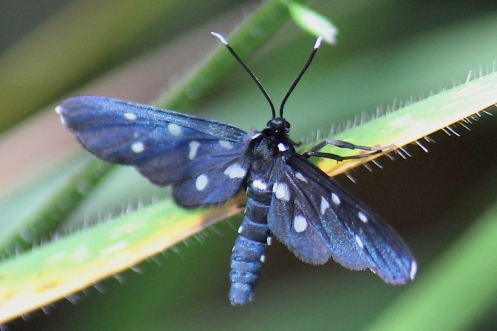
one of my favourite daytime flying moths is this Handmaiden moth of the Family Ctenuchidae;
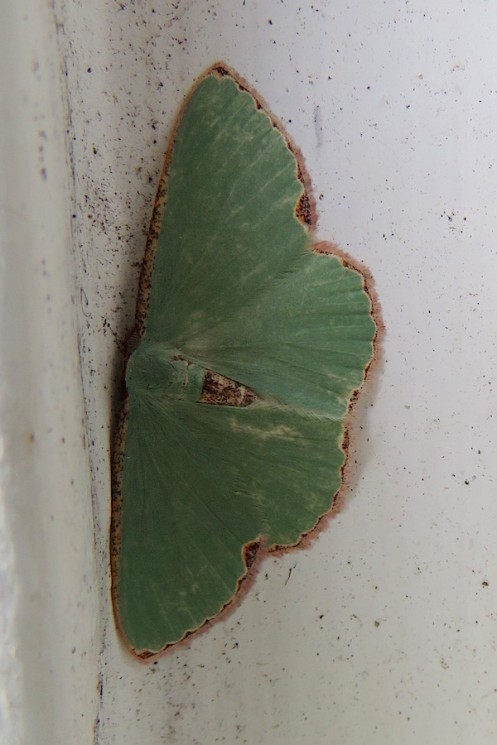
Heterorachis devocata, Red-lined Emerald;
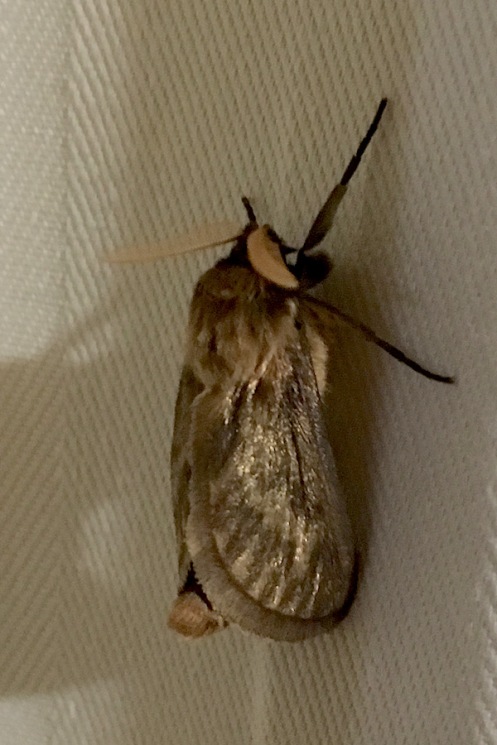
another unidentified moth;
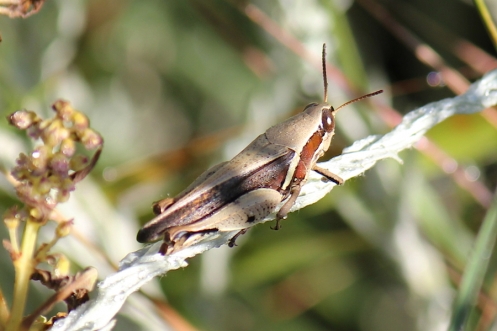
many grasshopper flick, tick in the grass;

this elegant Mantid graced our kitchen for a few days;

Net-winged Beetle;
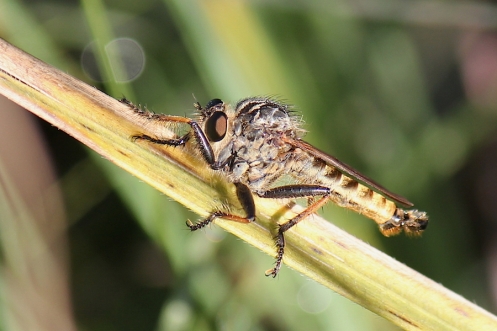
Robber Fly and
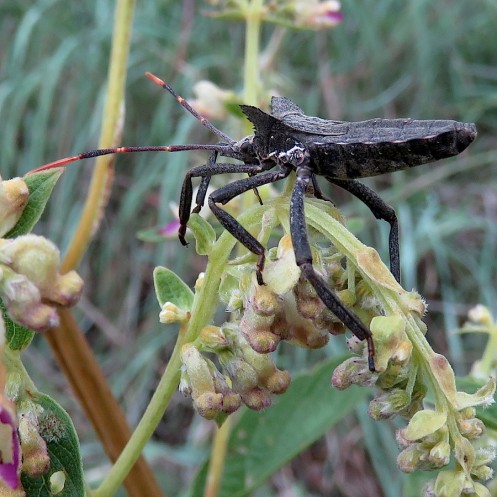
a Twig Wilter.
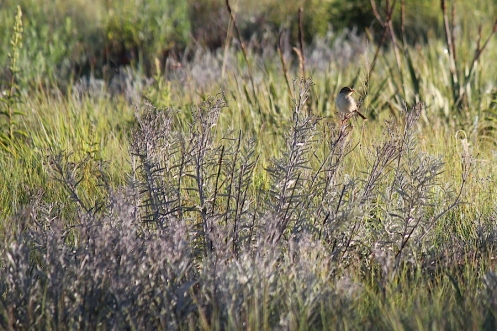
An early morning delight was this Wailing Cisticola on greying leaves of Vernonia.
There were several occasions when I saw the Common Reedbuck and Grey Duiker, quite frequently the Black-backed Jackal called in the early mornings and evenings.

